ESKOM, WHERE WATER IS AS IMPORTANT AS COAL
When you’ve conquered leachate, everything else is easy
WHAT ARE FLOODLINES AND WHY ARE THEY CHANGING?

Deadline for WSAs is here: are your process controllers registered?
Water Research Commission
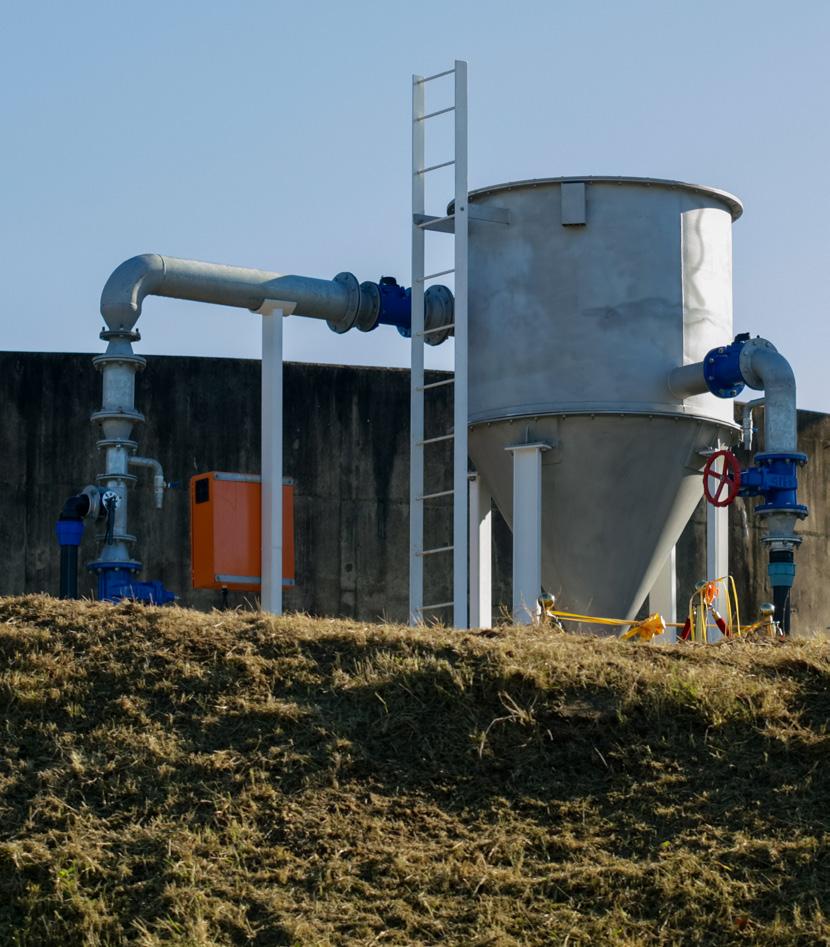


ESKOM, WHERE WATER IS AS IMPORTANT AS COAL
When you’ve conquered leachate, everything else is easy
WHAT ARE FLOODLINES AND WHY ARE THEY CHANGING?

Deadline for WSAs is here: are your process controllers registered?





Water is the essence of life. That’s why a type of measurement technology is required that does justice to its importance. Our level and pressure sensors ensure quality with precise measured values to support reliable treatment processes – especially when every drop matters.
Everything is possible. With VEGA.

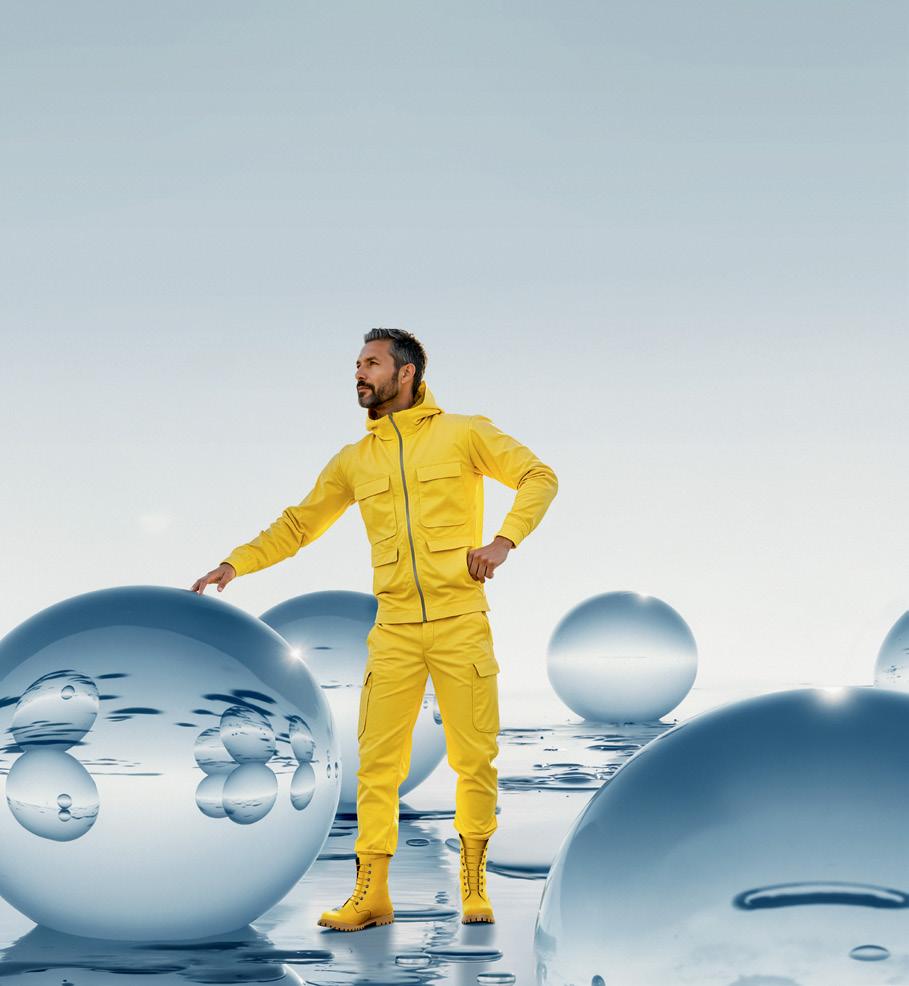










Developed in South Af rica through the Water Research Commission, the Vortex Settling Basin (VSB) is a water treatment system that will remove sediment, suspended solids, and other pollutants from water. P6


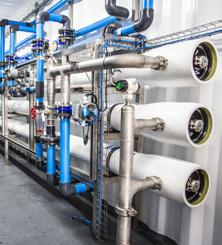
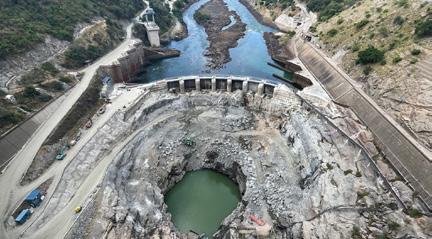
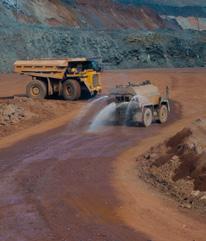

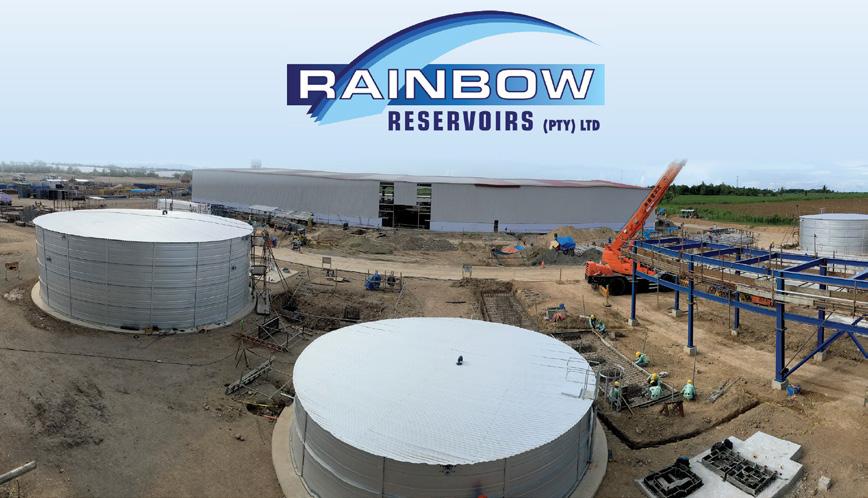
• High corrosion resistance
• Cost effective
• On-site assembly
• Tough and durable


• Low maintenance
• 5kL to 4000kL
• Steel-domed roofs or open-top tanks



• Human consumption/ food grade certified
• Tanks < 350kL require no concrete foundation
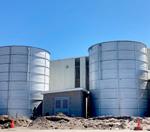

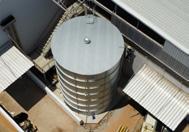

Managing Editor: Kirsten Kelly kirsten@infrastructurenews.co.za
Journalist: Duncan Nortier
Digital Manager: Chelsea Gillespie digital@infrastructurenews.co.za
Designer: Beren Bauermeister
Contributors: Dr Lester Goldman, Dr Harrison Pienaar, Duncan Nortier
Advertising Sales: Sindi Moni
c +27 (0)82 212 4574 sindi@infrastructurenews.co.za
Publisher Infrastructure News
47 Grove Road, Orange Grove, Johannesburg Gauteng, 2192
Tel: +27 (0)83 433 4475
www.infrastructurenews.co.za
ISSN: 1990 - 8857
Annual subscription: R330 (SA rate) kirsten@infrastructurenews.co.za
Copyright 2024. All rights reserved. All

WISA Contacts:
HEAD OFFICE
Tel: 086 111 9472(WISA)
Fax: +27 (0)11 315 1258
WISA’s Vision Inspiring passion for water
Physical address: 1st Floor, Building 5, Constantia Park, 546 16th Road, Randjiespark Ext 7, Midrand Website: www.wisa.org.za
BRANCHES
Eastern Cape:
Branch Contact: Dan Abrahams
Company: Aurecon
Tel: +27 (0)41 503 3929
Cell: +27 (0) 81 289 1624
Email: Dan.Abraham@aurecongroup.com
Gauteng
Branch Lead: Zoe Gebhardt
Cell: +27 (0)82 3580876
Email: zoe.gebhardt@gmail.com
KwaZulu-Natal
Chairperson: Lindelani Sibiya
Company: Umgeni Water
Cell: +27 (0)82 928 1081
Email: lindelani.sibiya@umgeni.co.za
Limpopo
Chairperson: Mpho Chokolo
Company: Lepelle Northern Water
Cell: +27 (0)72 310 7576
Email: mphoc@lepelle.co.za
Western Cape
Chairperson: Natasia van Binsbergen
Company: AL Abbott & Associates
Tel: +27 (0)21 448 6340
Cell: +27 (0)83 326 3887
Email: natasia@alabbott.co.za
DIVISIONS
• Anaerobic Sludge Processes
• Industrial Water
• International Water Association-Southern Africa (IWA-SA)
• Innovation for Water Supply & Sanitation
• Mine Water Lead
• Process Controllers
• Small Wastewater Treatment Works
• Water Distribution
• Water Reuse Division
• Modelling and Data Division
EMPOWERMENT PLATFORMS
• Women In Water
• Young Water Professionals

I had my first ‘gym shower’ today. Not because I have started a new fitness regime (though I’ve started one) but because I had absolutely no water at home due to the Rand Water maintenance work.
Ihave lived at my house for 13 years, and have experienced low pressure (and was expecting to have a similar experience today), but never no water. And if you want to know my Gauteng street address then by all means inbox me, my neighbour’s house is for sale.
My family’s reaction was hilarious. My nine year old son started moaning about the ‘stinky number 2’ made by my seven year old daughter, and was outraged when he found out that it could not be flushed. My seven-year-old daughter helpfully informed my son that after skipping his post-rugby shower, he’s probably going to smell even worse later. My domestic worker was probably thrilled at the prospect of leaving work early (what can you even clean with no water?). My husband went through the seven stages of grief – starting with denial (he actually went outside to see if someone turned the water off even though his wife is somewhat of a water industry specialist), then anger (how dare Rand Water do maintenance and inconvenience him). He skipped a few and is now at hope, phoning me every few hours asking when the water will return.
The importance of communication Communication in the water sector is essential for building public trust, ensuring coordination among stakeholders, and promoting responsible water use. It helps translate complex challenges into clear actions, especially during crises or when behaviour change is needed.
I read with much interest on how the maintenance schedule was communicated. And it was communicated by both Rand Water and Johannesburg









Water. There were even images showing where Rand Water was in their maintenance. There were WhatsApp messages on where to find water tankers, social media posts on areas affected and countless press releases.
BUT there is a difference between communication with water sector professionals and the average man on the street. The word ‘throttling’ is used – I doubt the average citizen fully understands how that relates to their water supply and why there is throttling. Rand Water went through a long list of what their maintenance entails, but they never stated why they are doing maintenance. When people are being inconvenienced, tell them why, give them the positive, make them understand the magnitude of the maintenance. A whole list of reservoirs were listed as being impacted by the maintenance work. I don’t think people even know what reservoir supplies what neighbourhood. They state that once the maintenance is complete, it may take a while for systems to recover. Explain why this is, and how filling up your bathtubs to store more water may make the recovery longer.
In a province where water interruptions are becoming more frequent, communication needs to go beyond technical jargon and press releases. It should connect with people, explain the “why” behind the inconvenience, and empower them with clear, relatable information. Because when taps run dry, good communication is as essential as water itself.

In each issue, Water&Sanitation Africa offers companies the opportunity to get to the front of the line by placing a company, product or service on the front cover of the magazine. Buying this position will afford the advertiser the cover story and maximum exposure. For more information, contact Sindi Moni on +27 (0)82 212 4574, or email sindi@infrastructurenews.co.za.
The opinions and statements shared by thought leaders in the water industry to Water&Sanitation Africa .
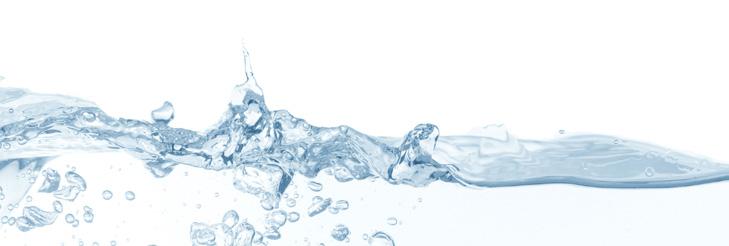

“In a province where water interruptions are becoming more frequent, communication needs to go beyond technical jargon and press releases. It should connect with people, explain the “why” behind the inconvenience, and empower them with clear, relatable information. Because when taps run dry, good communication is as essential as water itself.”
Kirsten Kelly, editor, Water&Sanitation Africa Magazine


“The water sector is more than just an industry – it’s a vital force shaping communities, ecosystems, and economies. A career in this field isn’t just about mastering technical expertise; it’s about evolving into a leader who balances innovation, sustainability, and people-centric management.”
Dr Lester Goldman, CEO, WISA


“Often, international technology is imported and then tailored to South African context, however, the VSB technology is by South Africa for South Africa and this localisation effort not only reduces dependency on imported solutions but also fosters a sense of ownership within communities. This kind of work is critically important for the WRC, as it demonstrates our ability to translate theoretical scientific innovations into practical applications – not just at laboratory scale, but also in real-world settings.” Lesego Gaegane, senior project manager: NatSilt programme, Water Research Commission (WRC)



“Without strong management or updated infrastructure, smart technologies may never be adopted – or they may be installed without delivering their full potential. And without adopting technological solutions, water losses through ageing infrastructure will continue.”
Dr Harisson Pienaar, chairman, WISA


“Each year, we pour billions of rands into building, refurbishing, and upgrading water and wastewater infrastructure – but without the right skills to operate and maintain it, that investment goes to waste. Infrastructure is only as effective as the people who run it. In a nutshell, process controllers help protect infrastructure investments by ensuring that plants operate and are maintained according to their intended design.”
Anet Muir, chief director: Water Use Compliance Monitoring and Enforcement, DWS



“Selecting the correct type and size of oil separator for outdoor applications require careful consideration of actual stormwater volumes passing through the system. It’s essential to evaluate rainfall events and their effect on the catchment area, while also considering the location of the separator inlet –particularly whether it is positioned at the highest or lowest point on the site.”
Justin
Kretzmar, sales engineer, Rocla


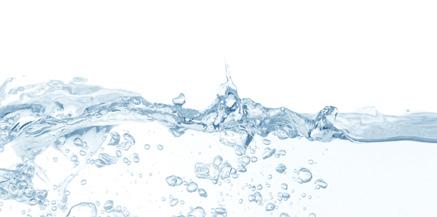
“The thickening of excess sludge is often not given the attention it actually deserves. Thickening is an important process stage that affects the removal of sludge from the secondary clarification plant as well as the feeding of a digester. Thickening is usually done before digestion, dewatering, or final disposal to reduce the volume of sludge handled in downstream processes. It is done to increase the bacterial count in the sludge, increasing its efficiency in the digester. With the Flottweg OSE decanter, surplus sludge generated during the biological stages is concentrated from 1% or less dry substance content to 5 - 8% before it is pumped into the digester. As a result, the amount of sludge is reduced by 90 to 95%.” Johan de Jager, technical sales manager, Porex SA



“Conventional treatment plants are no longer equipped to effectively remove new pharmaceutical residues and toxic chemicals found in our water and wastewater — but our advanced, technologydriven solutions are designed to do just that. While conventional, centralised treatment plants are designed to treat water and wastewater quality with a narrow set of parameters, our systems are far more flexible.” James Morisse, business development manager, NuWater
30 PAGE


“An added complexity is the changing chemical composition of leachate over time, with chemical oxygen demand (COD) and biological oxygen demand (BOD) levels diminishing as the leachate ages. Increased levels of salts, heavy metals, ammonia, and nitrogen may be observed during the later stages of leachate development.” Dr Nthabiseng Motsoane, national technical manager, EnviroServ
36 PAGE


“Energy and water are deeply interdependent. Energy systems require significant amounts of water – for fuel extraction, mining, hydropower generation, and especially for cooling in power plants. Conversely, the water sector relies heavily on energy for pumping, treatment, distribution, and safe wastewater management. This interconnection extends to food production, which depends on both water and energy. When the water sector is under stress, it impacts energy systems, which in turn worsens the water crisis and ultimately threatens food security. To illustrate the scale: agriculture—vital to South Africa’s economy and a major source of employment – consumes about 60% of the country’s fresh water.” Jay Bhagwan, executive Manager: Water Use and Waste management, Water Research Commission,


“Eskom is a strategic water user, which grants the entity 99.5% assurance of supply. Eskom utilises approximately 3% of South Africa’s freshwater sources, primarily sourced from the Integrated Vaal River System. We use 270 000 000 m3 per annum for our operations. For us, water is as important as coal; without it, we cannot generate electricity.”
Gabi Mkhatshwa, senior manager: Climate Change and Sustainable Development, Eskom

38 PAGE

“Mining is regulated by the Department of Mineral Resources (DMR), but the impact of mining concerns the Department of Forestry and Fisheries (DFFE) as well as DWS. We at the DWS have a particular interest in mine water management, mines use massive quantities of water and threaten ground water and other supply sources when not managed properly. As South Africa focuses on sustainability, the issue of mine water becomes important in the context of ensuring environmental safety and circular economic practices. This necessitates a strong regulatory framework that encompasses the changing landscape of environmental law in South Africa.”
Raquel Nosie Mazwi, director of mine and industrial water quality regulation, Department of Water and Sanitation (DWS)


“In most mining transactions, the issue of water generally presents a significant risk to investors. This extends well beyond ensuring that the operation has a sufficient supply of water to meet its production targets; other key factors include the mine’s ability to minimise pollution and discharge water, if necessary, with a water quality in line with both legislation and global standards.” Peter Shepherd, partner, and principal hydrologist at SRK Consulting South Africa
43 PAGE 46 PAGE

Developed in South Africa through the Water Research Commission, the Vortex Settling Basin (VSB) is a water treatment system that will remove sediment, suspended solids, and other pollutants from water.
South Africa has a history of building dams to address water security needs and to provide essential bulk water supply to its population. But several of these large dams are steadily losing storage capacity each year due to soil erosion and land clearance, with many dams experiencing increased levels of siltation.
In response to this, the Department of Water and Sanitation (DWS) appointed the Water Research Commission (WRC) to develop the National Siltation Management Strategy for Large Dams (NatSilt Programme).
The NatSilt Programme is funded by the DWS through its Water Resource Infrastructure Management) branch, which is responsible for the asset management and infrastructure maintenance of 276 government water schemes across the country, including over 325 large state dams that make up more than 90% of the country’s total storage capacity.
The programme is designed to develop solutions to address siltation within dams while embedding sustainability, climate resilience, and capacity building at the heart of South Africa’s water sector.

“NatSilt takes a holistic, system-wide view, tackling upstream erosion, catchment degradation, and infrastructure vulnerability through proactive and coordinated strategies. By addressing siltation not only at the dam wall but across the entire water value chain, the programme directly supports long-term water security. Its success lies in bridging the strategic, technical, ecological, operational, and socio-economic dimensions of sediment management, while also investing in skills development and institutional capacity,” explains Lesego Gaegane, senior project manager: NatSilt programme, WRC.
Vortex setting basin (VSB)
She adds that the VSB is a tangible example of this innovative, impactdriven approach. It is a technological intervention.
The VSB is a type of water treatment system that utilises a vortex flow pattern to remove sediments, suspended solids, and other pollutants from water. It operates on the principle of centrifugal force, allowing heavier particles to settle at the bottom of the basin while cleaner water is discharged from the top. The


Fabrication and construction of the plant was done in Port Elizabeth and then transported to Kwa-Zulu Natal
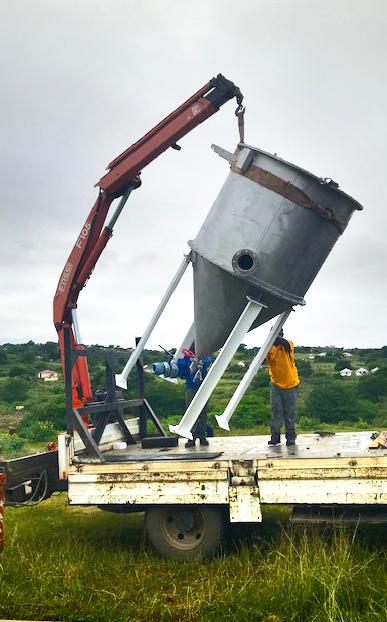
effectively removes heavy sediment particles through its vortex action, causing the sediment to settle in a cone shape. These particles can then be extracted by gravity, while the clearer water flows out over a discharge weir. This action results in up to 90% efficiency, allowing more water to be treated with less energy input, less chemicals and minimal maintenance.
“Developed in South Africa through WRC-funded research, refined through rigorous industrial laboratory testing, and now successfully demonstrated in the field, the VSB story is a powerful example of local innovation in action,” adds Gaegane.
Its origins lie is a WRC study that is nearly 20 years old entitled ‘Considerations for the Design of River Abstraction Works in South Africa’. A significant portion of the study focussed on the development of guidelines to effectively design the hydraulic systems of river abstraction. These guidelines have been used for the
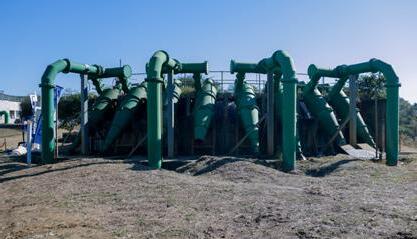
Before
designs of many of the new abstraction works and this is probably one of the research success stories of the WRC. However, there was a gap in guidelines for smaller extraction systems that had pumping capacities lower than 100 litres per second. Therefore, another study took place between 2017 and 2020 on small river abstractions and irrigation systems.
“The outcomes of that study was the VSB technology. Our technology transfer manager, Thabo Mthombeni, flagged the technology for the NatSilt Programme. We did a lot of due diligence in terms of investigating any registered intellectual property for similar technologies and found nothing registered,” says Gaegane.
The VSB technology represents the WRC’s mission to turn research into scalable, real-world solutions for the water sector – a full research-to-impact cycle. This initiative supports the WRC’s broader vision of promoting climate resilience, sustainability, and homegrown innovation. “The VSB is more than a
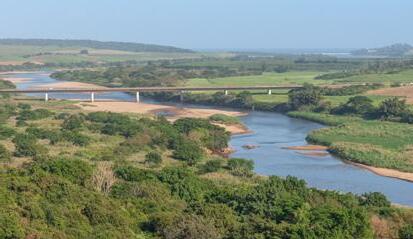
technological advancement – it’s a symbol of what’s possible when South African ingenuity, science, and community needs align. It proves that smart, locally developed solutions are not only possible, but within our reach,” states Gaegane
She adds that the VSB is particularly suited to small rural abstraction systems like farms and small municipalities that pump less than 100 litres per second or a maximum of 8.6 Mℓ/day. “It’s designed for fine, non-cohesive sediment and requires no energy input and minimal upkeep, making it suitable for resourcelimited municipalities. With the VSB, small river abstraction systems can abstract water and purify it to cleaner quality, without feeding poor quality water that is sediment laden to water treatment works.”
Sand and silt, although naturally occurring, can lead to significant operational and maintenance problems in water infrastructure, particularly in systems that draw water from rivers, dams,
In fluid dynamics, a vortex (plural: vortices or vortexes) is a region in a fluid in which the flow revolves around an axis line, which may be straight or curved. Vortices form in stirred fluids, and may be observed in smoke rings, whirlpools in the wake of a boat, and the winds surrounding a tropical cyclone, tornado or dust devil.
or boreholes. These fine particles can cause pump wear and damage as well as clogging and blocking of pipelines, valves and filters. Over and above the negative impact on water quality, sand and silt can also damage downstream equipment such as meters, sprinklers and nozzles.
The Thukela River abstraction point near Middledrift, Thukela River in KwaZulu-Natal was selected as a demonstration site to prove the real-world value of the VSB. DWS Deputy Minister, David Mahlobo, was present at the official start of the demonstration period for the VSB technology. He explained that Madungela was chosen for the demonstration for several reasons. “The large contributing catchment downstream of the existing Spioenkop Dam results in high sediment concentrations. The pump station abstracts raw water directly from the Thukela River and has no gravel trap, so the current sediment extrusion is by hydro-cyclones. Therefore, a good comparison with VSB performance will be possible.”

The VSB is a type of water treatment system that utilises a vortex flow pattern to remove sediments, suspended solids, and other pollutants from water

The VSB has a pump capacity of 8.6 Mℓ/day and will benefit a wide range of stakeholders, particularly those reliant on surface water abstraction for agricultural, municipal, and industrial purposes. The VSB is a buy-and-use system, no structural modifications are needed. Once installed, it is ready to operate. It increases the efficiency of the pumping station by separating the silt from water abstracted from the Thukela River. It also decreases the amount of chemicals used when pumping water to the treatment plant, with minimal maintenance needed. As it is more efficient than hydro cyclones, there will be more water to treat, thus increasing water security in the area. The technology will also ensure good water quality because the turbidity of the water will be addressed.
The demonstration will last for 12 months, in order to collect data for a
full hydrological year. The WRC will then create operational guidelines and may modify the VSB design, depending on the data collected.
Concluding his speech at the handover event, Deputy Minister David Mahlobo urged the local community to protect the VSB as it will be beneficial to them.
“Beyond technical innovation, the VSB initiative also delivers substantial socio-economic value through local job creation during installation and maintenance phases, skills transfer and training for municipal staff and technicians, and support for local small businesses through sourcing and fabrication. It is an investment in resilient, cost-effective infrastructure to meet the demands of a changing climate.”
The Vortex Settling Basin (VSB) has the potential to drive sustainable development and empower rural communities by stimulating local economies through its commercialisation and localisation; creating skilled jobs, supporting local manufacturing, and fostering a new industry around its production and deployment.
Community members from the surrounding area assisted with assembling the VSB plant, and local suppliers provided certain materials.
“Involving and engaging local community members contributes significantly to the success of the project. There is a great sense of ownership amongst the community, with some members trained to take water samples,” says Gaegane.
“Often, international technology is imported and then tailored to South
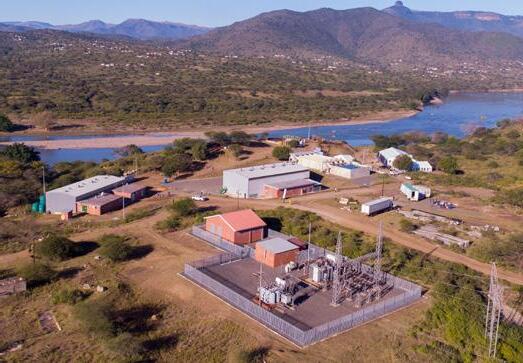
African context, however, this South African developed technology is by South Africa for South Africa and this localisation effort not only reduces dependency on imported solutions but also fosters a sense of ownership within communities.
Furthermore, as the VSB gains recognition, it opens avenues for partnerships between the government, the private sector, and community organisations, ultimately ensuring that the benefits of improved water management are distributed equitably,” she maintains.
"This kind of work is critically important for the WRC, as it demonstrates our ability to translate theoretical scientific innovations into practical applications – not just at laboratory scale, but also in real-world settings. We are hopeful that this innovation will culminate in an economy where all municipalities and bulk water suppliers recognise and adopt it as a groundbreaking technology that
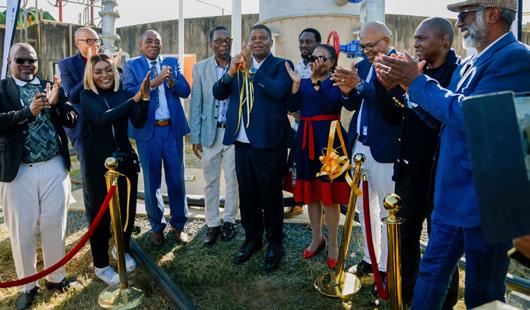
• No electricity required – powered purely by natural hydraulic flow
• High sediment removal efficiency
• Minimal water loss (approx. 8%)
• No moving parts, requiring minimal maintenance
• Scalable design adaptable to various capacity needs
has the potential to significantly improve the efficiency and capacity of water treatment systems across the country –particularly benefiting rural communities, where access to reliable and sustainable water services is often limited,” concludes Dr Jennifer Molwantwa, CEO, WRC.
The WRC plans to recommend the replication of the VSB model in other sediment-impacted catchments across the country, using lessons from the demonstration site to refine operational guidelines and inform national policy.
The VSB forms part of South Africa’s broader commitment to sustainable water resource management, circular economy principles, and inclusive development.

The water sector is more than just an industry – it’s a vital force shaping communities, ecosystems, and economies. A career in this field isn’t just about mastering technical expertise; it’s about evolving into a leader who balances innovation, sustainability, and people-centric management. By
Awater professional’s growth requires continuous learning, financial commitment, and personal sacrifice. This roadmap explores how individuals align their own ambitions with organisational growth while making meaningful contributions to the industry.
Early career (20-30 Years): laying the technical foundation At the beginning of a career, there’s excitement, curiosity, and sometimes uncertainty. The first years focus on building technical skills while gaining hands-on experience. Key milestones include:
• Education and training: Studying water engineering, environmental science, or hydrology provides a solid academic foundation. Many begin with diplomas or technical training.
• Internships and entry-level roles: Working in municipal facilities, environmental agencies, or private water companies provide real-world exposure.
• Learning the system: From water purification techniques to infrastructure maintenance, young professionals must immerse themselves in regulatory frameworks, sustainability challenges, and emerging technologies. This period often comes with financial constraints – tuition fees, relocation costs, and the challenge of finding paid opportunities. While some secure scholarships or employersponsored training, others self-fund certifications or take on side work to support their ambitions.
SMART Goal Example:
"Within two years, complete an
Lester Goldman, CEO, WISA
industry-recognised certification in water management and secure an internship that provides hands-on technical training."
Mid-career (30-45 years):
transitioning from specialist to leader With a decade or more of experience, professionals start looking beyond technical mastery. Growth now involves strategic problem-solving, team management, and broader industry impact:
• Advanced specialisations: Some move into water policy, infrastructure development, or technology-driven solutions to expand their influence.
• Mentorship and networking: Collaborating with experienced leaders helps build confidence in decision-making and strategic planning.
• Navigating financial barriers: While rewarding, funding further education like an MBA can be daunting. Some pursue company-sponsored training; others invest personally despite financial strain.
At this stage, balancing technical expertise with leadership development ensures future readiness for managerial roles, public sector influence, or entrepreneurship.
SMART Goal Example:
"Within five years, complete a management certification and transition into a leadership role overseeing water infrastructure projects, driving efficiency and sustainability."
Senior career (45-65 years):
Strategic leadership and industry impact With decades of experience, professionals find themselves guiding

organisational strategies, mentoring young professionals, and influencing national policies:
• Policy and innovation: Senior leaders focus on water security, climate resilience, and sustainable solutions.
• Knowledge transfer: Becoming a mentor, writing research papers, or training the next generation of professionals ensures expertise continues to shape the industry.
• Financial positioning and personal growth: Retirement planning, financial independence, and long-term investments require foresight. Some professionals consult, lecture, or advise industry boards to stay engaged while preparing for financial stability.
SMART Goal Example:
"Within the next decade, contribute to national water policy discussions and mentor emerging professionals to ensure knowledge transfer and industry sustainability."
Commitment and growth in the water sector
A career in water is not a passive journey – it demands dedication, adaptability, and resilience. Investing in both technical and leadership skills leads to meaningful impact, ensuring their skills benefit not just themselves but entire communities.
Whether at 20, 40, or 60, growth in this field is driven by a passion for progress, sustainability, and the people behind the industry. By following a SMART career plan, professionals in the water sector can achieve personal success while shaping the future of global water management.
Carpe Diem
Achieving sustainable and effective water management requires more than isolated interventions or reactive policies – it demands a deliberate and balanced three-pronged approach. This approach must integrate: (1) water service provision, (2) water resource protection and management, and (3) financial viability. Each pillar is essential, and none can succeed in isolation.
By Dr Harrison Pienaar, chairperson, WISA
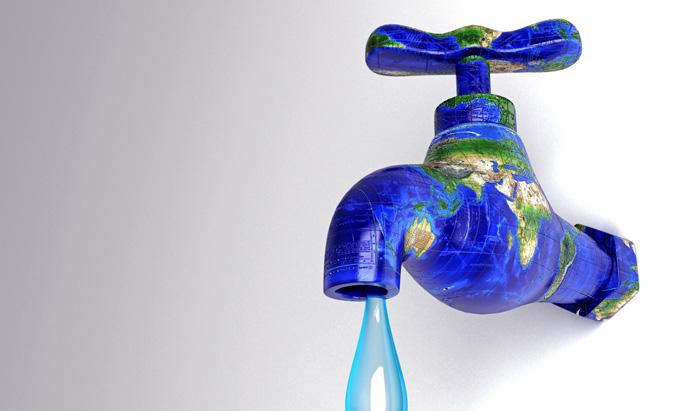
But equally important is how we implement this approach. Managerial, technological, and infrastructural solutions must all be given the same level of urgency and importance. They are not competing priorities. Instead, they are interdependent pillars that must work in concert.
When managerial solutions are not prioritised or implemented effectively, it is counterproductive to technological and infrastructure solutions. No matter how advanced our technologies or wellbuilt our infrastructure, poor planning, weak governance, and inadequate oversight can render them ineffective. Examples of these solutions are as follows:
• Managerial solutions: reducing non-revenue water, implementing sustainable water tariffs, improving operational efficiencies, outsourcing where beneficial, and institutional reforms such as performance-based contracts. These are especially important in smaller cities, where governance capacity may be limited.
• Infrastructural solutions: rehabilitation schemes, improved asset management, integration of ecological infrastructure, investments in water collection, treatment and storage as well as sewer separation systems.
• Technological solutions: anaerobic digestion, water beneficiation, next-generation sanitation systems,

desalination, water reuse, and, critically, digital water management platforms.
Without strong management or updated infrastructure, these technologies may never be adopted – or they may be installed without delivering their full potential.
And without adopting technological solutions, water losses through ageing infrastructure will continue.
Failure to implement solutions for managerial, technological and infrastructural interventions will lead to a cascade of negative consequences:
1) Increased water scarcity where growing populations and climate variability will continue to strain limited resources.
2) Escalating costs where operating outdated infrastructure without innovation results in rising operational and maintenance expenses. Delays in adopting new technologies today mean that larger, costlier infrastructure projects will be required in the future – projects that are often vulnerable to delays and conflict, as we’ve seen in major long-term developments.
3) Environmental degradation where poor wastewater treatment contributes to polluted water bodies, while inefficient agricultural practices can lead to soil erosion and poor water quality.
4) Serious social consequences as disparities in water access often
deepen inequality, with poor communities bearing the brunt. Water insecurity impacts public health, daily life, and dignity.
5) Stifled economic growth as water shortages limit agricultural and industrial output, deterring investment and slowing job creation. A lack of innovation in the water sector will discourage investment and job creation
In short, if we fail to simultaneously implement managerial, technological, and infrastructural interventions with equal urgency, our goal of effective water management will remain out of reach. We must approach water service provision, resource protection, and financial viability not as separate goals, but as intertwined imperatives requiring a unified, proactive strategy.
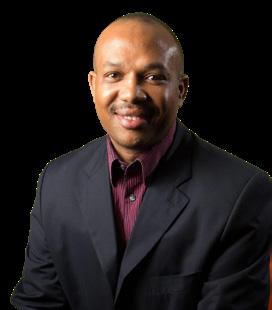
To mark International Women’s Day, WISA’s KwaZulu-Natal branch hosted a hike to Msinsi Nagle Dam, raising awareness of water sector challenges and providing a platform for women in the industry and community to share knowledge and highlight their role in delivering sustainable water solutions.
There was a wide variety of participants, such as women in a biodiversity management and pollution control programme, a fire management programme, students from the Durban University of Technology, the South African Youth Parliament for Water, and private sector companies like Universal Water Solutions, Talbot and AECI Water.
Trained staff from Msinsi Holdings hosted the walk and shared some information about the vegetation in the area. As a wholly owned subsidiary of the South African state entity, Umngeni uThukela Water Msinsi Holdings is tasked with managing the water resources around Umgeni Water owned or managed dams.
In addition to the hike, talks were held and group work was done on water issues, interventions and the role that women play with regards to water resource management, as well as economic opportunities in the sector.
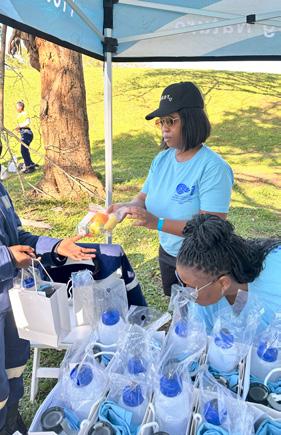

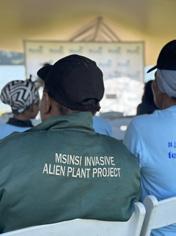

The workshop provided insights into:
• The national water crisis and challenges in WASH (Water, Sanitation, and Hygiene)
• Roles and contributions of women in Integrated Water Resource Management (IWRM)
• Opportunities and barriers in the water sector career pathways
The guest speakers delivered impactful messages on policy support, empowerment strategies, and community development through gender-inclusive approaches.
This event would not have been possible without sponsors:
• Msinsi Holdings
• Umngeni uThukela Water
• Universal Water Solutions
• Borda South Africa
• Talbot
Participants appreciated the physical and symbolic journey, which linked wellness with environmental stewardship.

Guest speakers, including representatives from BORDA SA and Msinsi Holdings, delivered impactful messages on policy support, empowerment strategies, and community development through gender-inclusive approaches.
“This was a great initiative that fostered environmental awareness, gender empowerment, and professional development. We engaged women in the sector on relevant sector challenges and inspired them to be key change agents in implementing plausible solutions. I also raised awareness on the current water resources challenges in our country which include water scarcity, mismanagement of water resources, water services interruptions and overall shortage of treated water to our communities,” says Mendy Shozi, co-ordination lead at the Kwa-Zulu Natal branch, WISA.

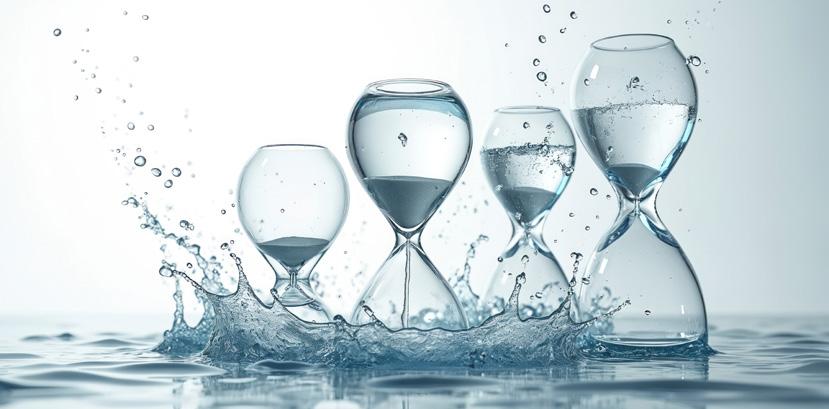
In June 2023, the Department of Water and Sanitation (DWS) introduced Regulation 3630, requiring all Class V and VI process controllers – senior-level professionals – to be formally registered as professional proce ss controllers (Pr. PC.Water). The deadline for full compliance is June 30, 2025.
Crucially, every treatment works must now have at least one supervisor qualified at a minimum of Class V, meaning that no facility can operate without employing or contracting a registered professional process controller. In addition, all process controllers – egardless of level – must be registered with the DWS.
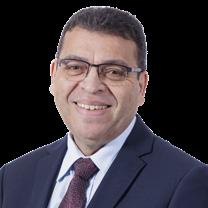
According to the latest Blue Drop Reports and Green Drops, taking into account the amount of registered water treatment and wastewater treatment plants, there needs to be:
• 1904 registered process controllers for water treatment plants
• 1394 registered process controllers for wastewater treatment plants
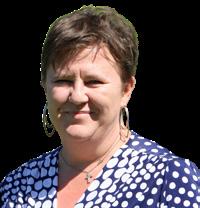
While a large portion of registrations will come from the public sector, the private sector is not exempt. Regulation 3630 applies to private institutions, estates, the mining sector and manufacturing industries.
“Our revised national norms and standards prohibit bulk users (such as owners of estates) to connect to bulk water and sanitation systems
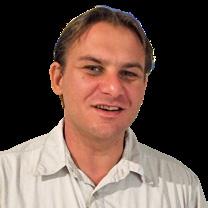

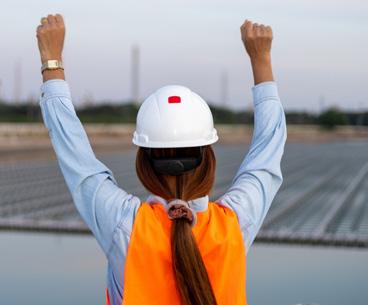
if those systems do not have the required capacity. We are therefore encouraging decentralised systems, and Regulation 3630 will give water service authorities (WSAs) the confidence that these privately owned decentralised systems will meet the required water quality standards,” explains Anet Muir, chief director: Water Use Compliance Monitoring and Enforcement, DWS.
Safeguarding the profession of process controllers “Water is the backbone of our communities, industries, and ecosystems. In order to protect this resource; expertise, accountability, and structured oversight is required. Since process controllers play a vital role in shaping the future of South Africa’s water sector, Regulation 3630 was introduced. For too long, the expertise of process controllers has been undervalued, this regulation formalises their role, ensuring that treatment facilities are managed by

Registered with Quality Council For Trades and Occupations:
• Occupational Certificate: Industrial Water Plant Operator NQF 5
• Occupational Certificate: Industrial Water Process Controller NQF 6
• Occupational Certificate: Water Regulation Practitioner NQF 8
• Occupational Certificate: Water Works Management Practitioner NQF 6
• Occupational Certificate: Borehole Pump Operator NQF 7
• Occupational certificate: Water and Wastewater Process Control NQF 3
Under development:
• Occupational Certificate: Water Resource Management Practitioner NQF 8
• Skills Programme: Water Conservation Practitioner NQF 4
• Water Data Collector NQF 3
• Water Use Specialist NQF 7
• Water Control Officer NQF 6
• Higher Occupational Certificate: Sanitation Worker NQF 5
qualified professionals who adhere to best practices and national standards. Professionals are there to serve the best interests of the public,” says Dr Lester Goldman, CEO, WISA.
Process controllers are the unsung heroes of the water and wastewater sector, often working in challenging conditions. By ensuring that treatment plants operate efficiently, safely, and in compliance with regulations, process controllers are the first line of defence against environmental and health risks. They also contribute to the costeffectiveness and sustainability of water infrastructure by minimising downtime, reducing energy consumption, and preventing system malfunctions.
“Each year, we pour billions of rands into building, refurbishing, and upgrading water and wastewater infrastructure –but without the right skills to operate and maintain it, that investment goes to waste. Infrastructure is only as effective as the people who run it. In a

nutshell, process controllers help protect infrastructure investments by ensuring that plants operate and are maintained according to their intended design,” states Muir.
Despite the critical nature of the role, it is evident that many process controller positions are filled by individuals who lack the necessary qualifications and experience. The latest Blue Drop and Green Drop reports show a clear correlation between low technical capacity and performance levels (low scores). “We need competent people in these roles to turn around state of the water services sector as measured in the Drop results. Wastewater treatment plants that do not comply with the discharge limits affect the entire water cycle – having a negative effect on our eco systems and drinking water. The cost to treat water to potable standards will continue to escalate until we ensure compliance with discharge rates. Regulation 3630 is one initiative to improve compliance,” she adds.
Dewald van Staden, lead: Process Controller Division, WISA, emphasises the high level of responsibility that process controllers must shoulder when doing their jobs. “Their actions directly impact public health and environmental sustainability.”
This highlights a broader truth echoed by Teslim Yusuf, executive for Planning, Monitoring and Evaluation at EWSETA, who notes that human capacity is at the heart of water security. “The capabilities and limitations of humans have the biggest influence on water security. A competent work force must design, build, operate and maintain

water infrastructure. Skills, training and expertise play a role in adopting new technologies, complying with and understanding regulations. Decisions around diverting funding to towards a particular project, generating revenue and refining policy are made by humans.”
He adds that ultimately, improved water security hinges on the development of human skills. “We operate in an environment that requires lifelong learning. Water sector professionals must remain curious, purposeful and embrace mentorship and coaching programmes.”
The purpose of the regulation
At its core, Regulation 3630 aims to:
• Elevate professional standards by requiring formal registration and qualifications for process controllers.
• Enhance accountability in water and wastewater treatment operations.
• Improve compliance with national and international best practices.
• Strengthen workforce development, ensuring continuous learning and skill enhancement. Skills will remain relevant as technology is updated.

“For employees, Regulation 3630 means greater professional recognition, structured career pathways, and access to ongoing development. It ensures that their expertise is valued and that they operate within a framework that supports excellence. For employers, compliance with the regulation will enhance operational reliability, reduce risks, and improve service delivery. While the transition may require investment in training and certification, the longterm benefits – including improved efficiency, reduced liability, and stronger institutional credibility – far outweigh the initial challenges,” adds Dr Goldman.
Classifying plants and process controllers
Process controllers are classified according to their training and experience, ranging from Class I (with basic training and limited experience) to Class VI (with extensive training and experience). Class I process controllers have limited responsibilities while Class V and Class VI process controllers hold a supervisor or management position

and are in charge of quality control. All treatment works are classified into five categories (A, B, C, D and E). This classification determines the level of expertise required from a process controller. “If we were to liken a process controller to a driver, the classification of plants determine if a ‘Lewis Hamilton’ or person with code 10 licence is needed. A process controller working on an E Class works (a plant with very basic operating processes, a small design capacity that needs very little maintenance) could be a lower level. However, process controllers working on A Class works (a plant with large design capacity, using technology that serves a large population) would need Class V and Class VI process controllers,” explains van Staden. He adds that, for example, a borehole in a rural area where the water has to be further disinfected and then distributed to a community will be classified as a treatment works. “Everybody, no matter where they are, deserves to receive SANS 241 compliant water.”
The classification of a plant is aligned to its water use license. “Any water
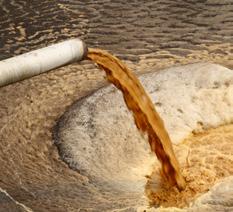





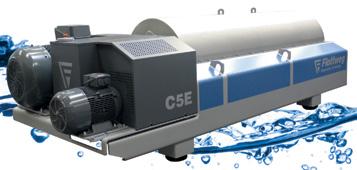



works that requires abstraction and/or discharge, requires authorisation under the National Water Act. Our Integrated Regulatory Information System (IRIS) handles processes for application for the works as well as registration,” states Muir.
Classification is based on a range of parameters:
• technology
• design capacity
• complexity of the treatment process (such as reverse osmosis; absorption; ion exchange, Nereda
• operating procedures (such as coagulation, flocculation, sedimentation, chlorination, reactor tanks, activated sludge processes)
• control processes (level, laboratory, pumps)
• if wastewater is treated for reuse and reclamation processes
A Class I process controller will typically coordinate, control and monitor the activities and operations of an E Works. They will collect wastewater samples as per sampling techniques and monitoring programmes.
In comparison, Class V process controllers manage plant personnel and shifts, finances and assets. They play a
key role in process optimisation and water quality management.
“Through completing 30 points a year (and remaining compliant with Regulation 3630), a Class 0, I or II, process controller can complete an occupation certificate over six years, and be eventually elevated to a higher class,” states van Staden. Regulation 3630 has mapped out requirements that must be met by process controllers to improve their class gradings.
Owners of these works need to ensure their infrastructure is classified and the process controllers registered per works on the DWS’ Integrated Regulatory Information System. For assistance please contact:
• Blue Drop Help Desk: Maryna Niemand, 012 336 6794, bluedrop@dws.gov.za
• Green Drop Help Desk: Ikageng Mashigo, 012 336 7371, mashigoI@dws.gov.za,
As individuals, process controllers must register with WISA – the only custodian of the Professional Process Controller designation as awarded by the South African Qualifications Authority (SAQA). WISA will not only ensure compliance
with the relevant qualifications and experience needed in order to be registered as a Class V and Class VI professional but will look after the professional reputation of its members. They will assist process controllers in maintaining their professional status by honing their skills as well as providing guidance and support to new entrants into the field.
The registration is dependent on relevant qualifications, training and experience.
After a five-year period, process controllers will be compelled to reregister, showing an improvement in skill from additional training.
The National Qualifications Framework, professional credits and ‘grandparent process controllers’ are recognised.
“Grandparent process controllers are people who are employed at a water services institution or by a water services work owner as a process controller without formal qualifications between 27 December 1985 and 27 December 2005. They are registered with DWS as a class 0 and were
subjected to a competency assessment. The grandparent class is site specific and non-transferrable to any other plant. Anyone appointed after 2005 does not qualify for the grandparent class,” adds Muir.
WISA and the Energy and Water Sector Education Training Authority (EWSETA) will work together with experts to help process controllers receive the required training to gain and maintain professional status.
“EWSETA’s programmes are demandled. According to the recent Blue Drop Report, we have a shortfall of 1704 qualified process controllers for water treatment plants. We have therefore developed various upskilling programmes with WISA for process controllers that provide a pathway to give them their certifications,” explains Yusuf.
These include:
• Recognition of prior learning (RPL) interventions: Many process controllers have ample experience but lack the certifications. There is a recognition of prior learning intervention, ensuring seasoned operators can achieve professional registration without starting from scratch.
• Occupational qualification development: There are also longer courses for a candidacy programme for process controllers looking to upgrade to Class V and Class VI. EWSETA has facilitated the creation and registration of the Water Works Management (NQF Level 6) qualification to equip supervisors and managers with the skills needed to oversee treatment plants. We are also developing an NQF Level 8 Water Resource Management programme, aimed at training senior professionals in advanced water management techniques.
EWSETA, together with other strategic partners have developed a few key water sector accredited qualifications that include:
• Water reticulation manager course
• Water works management practitioner
• National certificate: water and wastewater process controller
• National certificate: water and wastewater treatment process operations
• National certificate: landscape irrigation
• Occupational trade in plumbing There are opportunities for professional
A process controller is more than someone who works at a water and wastewater treatment plant, it is a person who is responsible for the control and management of various processes that make up water and wastewater treatment plants.
A professional process controller is an individual with a higher level of competency that play a management or supervisory role at plants. They are governed by a code of conduct that ensure integrity and professional excellence in the water sector.
registration through funded projects with EWSETA and LGSETA. WISA also offers subsidised training for waterboards and municipalities.
“We have noted some concerns by process controllers over the fact that they are registered with DWS as Class V process controllers, but do not qualify as professional process controllers under the WISA requirements. There is an RPL registration process,” comments Melissa Cousins, operations manager, WISA.
Continuous professional development
Given the rapid technological advancements in the water sector, process controllers must continuously upgrade their skills and cannot afford to remain stagnant. Therefore, once registered, process controllers (much like engineers and doctors) will be required to maintain their competence through achieving 30 continuous professional development (CPD) points over a three-year cycle. CPD activities must be accredited with WISA and include, but are not limited to:
• Conferences • Workshops
• Lectures • Seminars
• Courses • Colloquiums
• Online learning
WISA has a specific membership aimed at municipalities, this membership includes the registration of two professional process controllers, further registrations may be provided at a reduced rate, helping municipalities meet the requirements of Regulation 3630. In addition to this municipalities will receive a number of benefits and will be given preferential access to funded CPD training to the benefit of registered professional engineers, scientists and process controllers to retain their professional status.
Currently, there are a number of initiatives to train process controllers, but there is little standardisation and uniformity with training. “There are instances where process controllers – as part of their annual training requirement – may have done occupational health and safety training, but no training around water and wastewater treatment. We are rectifying this through the development of a minimum skills framework for the water sector, with a curriculum for on-the-job training,” says Muir. Muir adds that minimum qualifications and experience will also be prescribed to water service authority (WSA) managers.
“The Water Services Amendment Bill stipulates that failure to comply with the standards and regulations outlined in the Act constitutes an offence, punishable by fines ranging from R1 million to R10 million and five to ten years of imprisonment,” states Muir. Furthermore, there is a water service provider licensing mechanism that is introduced in Amendment Bill, and the WSA applying for that license will be penalised and may not qualify to be licensed should they fail to register their process controllers, they will not receive a license. “If municipalities want to stay in business as water service providers, they will have to comply with this Regulation,” adds Teslim Yusuf, executive: Planning, Monitoring and Evaluation, Energy and Water Sector Education Training Authority (EWSETA).
In conclusion Yusuf sums up Regulation 3630 aptly with a quote from the author Brian Herbert – ‘the capacity to learn is a gift, the ability to learn is a skill and the willingness to learn is a choice’.
Hach, a global water quality analysis company, has released the new NH6000sc Online Ammonium Analyser. This new offering is designed to optimise water monitoring in both the municipal and industrial sectors. The Nh6000sc focuses on reliability with minimal maintenance.
With rising demands for smarter, faster, and more efficient water quality measurement systems, the NH6000sc uses gas sensing electrode (GSE) technology to deliver highly accurate ammonium readings across a wide measuring range. Whether monitoring wastewater or drinking water, the NH6000sc ensures

Used in conjunction with other Hach products for optimal performance, the NH6000sc gives reliable readings with minimal human input
precise, stable, and dependable results with minimal user intervention.
The rising demand for smarter, faster, and more efficient water quality monitoring systems has led to the adoption of advanced gas sensing electrode technology to give extremely accurate ammonia readings across a wide measuring range.

The NH6000sc is built for withstanding harsh conditions
Smart technology, simplified operations
The NH6000sc is designed for continuous use in extreme outdoor conditions. Its smart housing and interface allow biannual maintenance. Automated calibration and gas verification boost consistency and trust in data.
Flexible measuring ranges and reliable samples
With four selectable ranges (0.02–1000 mg/L NH₄-N), the NH6000sc is ideal for low to highstrength wastewater. Used with Hach’s FX610 or FX620 filtration systems, it delivers clean, reliable samples with reduced fouling.
Both options are engineered to reduce user interaction – with cleaning needed only every three months under standard conditions –and come with smart flow detection to ensure consistent operation.
The NH6000sc forms part of Hach’s Claros™ Water Intelligence System. This means it is fully digital
and compatible with Hach SC controllers. When connected to Claros, it enables real-time data access, process optimisation, and seamless integration with plantwide monitoring systems, giving operators unprecedented control and confidence.
Built for harsh conditions
With an IP55 rating and a temperature range from -20°C to 45°C, the NH6000sc is built for tough, humid, and outdoor environments and perfect for a wide range of installations.
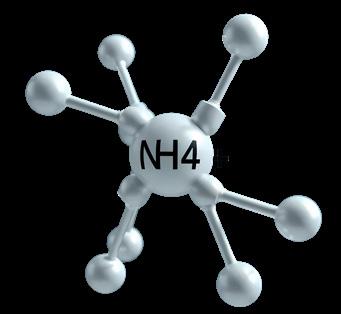
With only twice-a-year user maintenance, the best-in-class ammonium analyser just got better.
■ High-quality measurements and predictive diagnostics for optimal performance
■ Maximise uptime and accuracy with trusted technology
■ Save time with biannual maintenance
■ Robust and lightweight integrated filtration options
LEARN MORE!


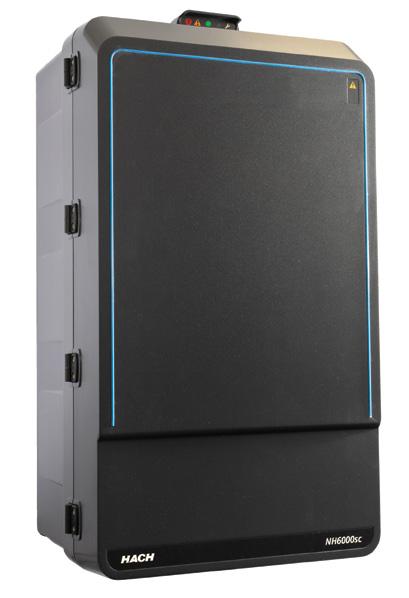

Monitoring water flow in wastewater and drinking water environments is necessary for quality and efficiency. Part of South Africa’s water challenges can be addressed by adopting technology that is both fit for purpose and, above all, simple.
Unnecessarily difficult solutions put a strain on adoption and implementation, and the simple solutions are often the ones that get picked up sooner, but simple does not mean ‘less.’
An example of this is Endress+Hauser’s new 80GHz compact radar range, consisting of the Micropilot FMR10B, FMR20B and FMR30B, which is designed to help customers reach their compliance targets through simple and efficient measurement solutions.
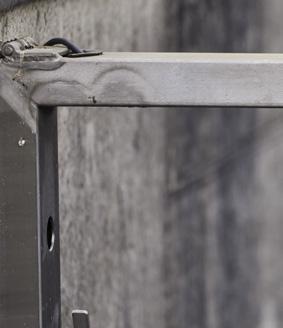
Commissioning in the water and wastewater industry applications can often be complex and timeconsuming. However, the Micropilot FMR10B, FMR20B and FMR30B can streamline these activities with guided wizards and software that eases complex actions, for easier commissioning. The Micropilot FMR10B, 20B and 30B are compact level and flow sensors for continuous measurement, that can be used for a wide range of applications in the water and wastewater industry.
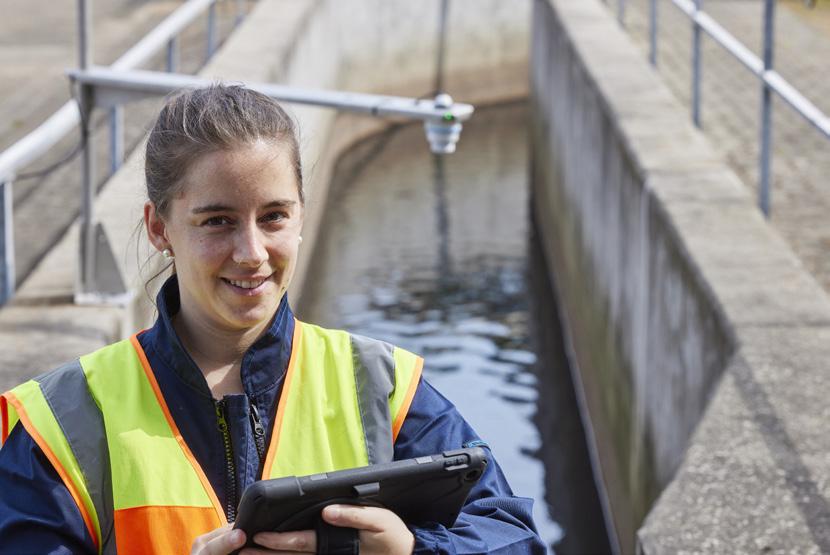
The Micropilot FMR10B, 20B, and 30B also come with an optional flood protection tube and a weather protection cover, thus protecting the device from damage due to flooding

Effective sewer management involves the monitoring of flow and level values to ensure that the system operates efficiently and to prevent overflows. Sewer management in South Africa faces many challenges. The Green Drop report, which assesses the performance of wastewater plants, highlights that at least 39% of wastewater plants in South Africa are deemed to be in poor or critical condition. Some of the challenges faced by these plants include having narrow spaces for the mounting of devices and the risk of flooding.
The Micropilot FMR20B is suitable for limited spaces, with the compact sensor being easy to mount and to commission with the use of Bluetooth and Endress+Hauser’s SmartBlue application. A variety of accessories complement these devices and include various mounting brackets, flood protection tubes and weather protection covers, ensuring consistent, reliable measurement.
Open channel flow in water and wastewater plants involves the movement of water through various channels that are exposed to the atmosphere. This type of flow is generally present in wastewater treatment plants for the movement of influent and effluent; however, these types of applications face the challenge of volatile weather conditions and the risk of flooding.
The Micropilot FMR10B, 20B and 30B are independent of environmental influences with an integrated flow calculation. The Micropilot FMR10B, 20B, and 30B also come with an optional flood protection tube and
a weather protection cover, thus protecting the device from damage due to flooding.
Pump station and lift stations
Pump stations and lift stations are essential for moving water and wastewater through treatment processes. These stations often move water over long distances and in challenging conditions.
Lift stations move water between different elevations. Due to this movement, turbulent surfaces and the
formation of foam can pose a problem. These stations present narrow points of installation for mounting devices and are typically ex-zoned, which are areas classified as having a potentially explosive atmosphere.
The Micropilot FMR20B and FMR30B are equipped with 80 GHz technology, which enables the device to measure accurately irrespective of installation and application conditions. These devices also come with certifications that comply with the requirements for hazardous area applications.
Intermediate bulk containers (IBC) and storage tanks
IBC and storage tanks are essential for the storage and handling of various substances made up of different media types and with varying chemical resistance. These tanks can also be present in Ex zones. The Micropilot FMR10 (ATEX version) enables the installation directly on the inner side of the tank. External non-intrusive measurement can be performed on plastic tanks, eliminating potential influences from different media types.

The Micropilot FMR10B, 20B and 30B are compact level and flow sensors for continuous measurement, that can be used for a wide range of applications in the water and wastewater industry.
The FMR 20B and 30B have 80GHz technology, which enables the device to measure accurately irrespective of installation and application conditions
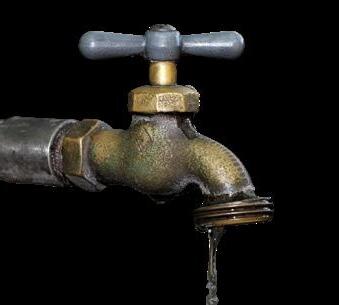
South Africa’s urban centres encounter substantial water supply challenges. While the larger cities like Johannesburg, Cape Town, or Durban make the headlines, smaller towns experience the same challenges, often on a more severe scale.
While larger cities are vital, maintaining stable water infrastructure is equally essential for the health, economic vitality, and well-being of communities of smaller towns.
South Africa is inherently water-scarce, receiving an average annual rainfall of 497 mm, which is 50% less than the global average. This scarcity is exacerbated by uneven distribution and aging infrastructure. The eastern regions receive much of the rainfall, leaving the western parts arid. Compounding this issue is the ageing water infrastructure, which often leads to significant water losses and inefficiencies, resulting in an unstable water supply. As urban populations grow, the demand for water increases, putting additional stress on the already limited resources.
The health impact of water supply challenges
Since late 2023, residents in Johannesburg have frequently lost their water supply. In 2025, water consumption has surpassed permitted levels by 61%, causing nearly daily outages, with disruptions affecting residents, critical services, and economic activities.
Comparatively, in the smaller town of Hammanskraal, residents have lacked reliable, clean water for over ten years. The 2023 cholera outbreak, causing over 30 deaths, highlighted the urgent need for a solution. Despite existing infrastructure, the township north of Pretoria faces frequent water
contamination and shortages. Residents often queue at boreholes or rely on municipal trucks for water.
The transmission of cholera is intricately linked to inadequate access to clean water and sanitation facilities, with resource-poor communities, including refugees, rural communities, and temporary displacement camps, particularly vulnerable to outbreaks. Any disruption in water and sanitation systems or a sudden surge in community size owing to displacement can spark a humanitarian and health crisis, elevate the risk of cholera transmission, and trigger a regional epidemic.
Efficient water management becomes imperative in such a context.
Potable water supply is key to any urban centre, big or small
Urban centres, from busy metros like Johannesburg to smaller towns like Hammanskraal, must adopt advanced technologies and smart water management systems. These systems not only help in reducing water losses but also ensure that the distribution is fair and sufficient to meet the needs of all residents. By leveraging real-time data through sophisticated sensor technology, municipalities can identify and address issues promptly, preventing disruptions in supply and improving overall water usage efficiency. This proactive approach is essential in building resilience against the frequent droughts and ensuring a sustainable water supply for future generations. Effective water management depends on the accurate measurement of water levels and pressure throughout the supply network. Without precise data, municipalities struggle to detect leaks, monitor consumption, and ensure a consistent supply. The challenge of maintaining a reliable water infrastructure is compounded by the issue of non-revenue water – water that

is produced but not billed due to losses, which averages 31% across South African utilities. This significant loss of water not only represents a waste of valuable resources but also affects the financial viability of utility providers.
Reducing non-revenue water requires real-time monitoring and swift response to anomalies, tasks that are unmanageable without reliable instrumentation. Advanced sensor technology can provide continuous data on water levels and pressure, helping utilities to identify leaks quickly and take corrective actions. Accurate measurement can also aid in optimising water distribution, ensuring that the supply meets the varying demands of different areas within a city.
Precision leads to access
Even more importantly, precise data collection enables better planning and resource allocation. Municipalities can use the insights gained from monitoring systems to forecast demand, schedule maintenance, and plan infrastructure upgrades. This proactive approach is essential for managing water resources efficiently, particularly in a country where water scarcity is a persistent issue.
By investing in advanced instrumentation and adopting smart water management practices, South African urban centres can improve their water infrastructure and ensure a stable supply for their residents. Such measures are crucial not only for large metros but also for smaller towns, where the impact of water shortages can be even more severe. Reliable water infrastructure is foundational to the health, economic vitality, and resilience of communities, making it a priority for sustainable urban development.
The stability of water supply systems is a critical factor in the development and sustainability of South Africa’s urban areas. Addressing the challenges requires a combination of infrastructure investment, skilled management, and precise measurement tools. By adopting advanced instrumentation solutions, municipalities can enhance their capacity to provide reliable water services, fostering healthier and more resilient communities across the nation.
VEGA provides various technologies tailored to the needs of the water and wastewater industry, with

instrumentation able to measure level and pressure accurately in various components of the water supply system. These sensors are designed to withstand harsh conditions and deliver precise readings, which are critical for effective water management.
How technology helps
Various technologies can be tailored to the needs of the water and wastewater industry. VEGA, a measurement technology company, has worked with municipalities and provides technology that can measure level and pressure accurately along various components of the water supply chain. These sensors are designed to withstand harsh conditions while still delivering precise readings, critical for effective water management.
By integrating VEGA’s sensors, municipalities can gain real-time insights into their water systems, enabling proactive maintenance and efficient resource allocation. The right solutions can facilitate better planning and decision-making. Accurate measurement data allows municipalities to forecast water demand more effectively, schedule routine maintenance, and plan infrastructure upgrades. This predictive capability helps in ensuring that water distribution meets the needs of varying areas within a city, preventing shortages and optimising resource use.
VEGA’s commitment to innovation ensures that its technology evolves to
meet the changing demands of the water sector. Ongoing research and development efforts aim to introduce more efficient, reliable, and user-friendly measurement solutions, supporting the goal of sustainable water management. By facilitating accurate measurement and real-time monitoring, VEGA helps municipalities manage their water resources more efficiently, ensuring a stable and reliable supply for all residents. This contribution is vital for the health, economic vitality, and resilience of communities, making it a priority for sustainable urban development.
By ensuring precise readings and measurements existing infrastructure benefits from proper use
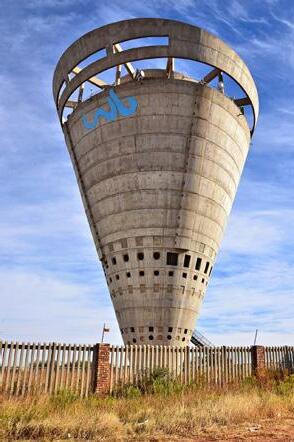

Rocla has expanded its range of separators and filters for oil and petrochemical contaminants. These systems are all essential for preserving and protecting water resources as well as ensuring regulatory compliance.

The new products offer more flexibility and variation for designers, with cost effective units that can cater for far greater flow capacities. Additionally, we have also updated our existing range of grease separators that are specified for separation and removal of restaurant and catering industry grease,” explains Justin Kretzmar, sales engineer at Rocla.
Oil separators are commonly installed at industrial plants, urban transport areas, workshops, parking lots, petrol stations and car washes and logistics depots. When oil enters municipal water systems, it can quickly spread through sewer or stormwater networks and contaminate rivers, wetlands and groundwater. Even small amounts of oil can form a thin film on water surfaces, blocking oxygen exchange and harming aquatic life. Additionally, oil contains toxic compounds that can persist in the environment and accumulate in the food chain, threatening both ecosystems and human health. Oil contamination presents a major challenge for water treatment plants, as it not only complicates the purification process but also significantly increases treatment costs.

“Selecting the correct type and size of oil separator for outdoor applications require careful consideration of actual stormwater volumes passing through the system. It’s essential to evaluate rainfall events and their effect on the catchment area, while also considering the location of the separator inlet –particularly whether it is positioned at the highest or lowest point on the site,” says Kretzmar.
Outdoor areas prone to oil such as uncovered workshops, truck parking areas, wash bays or fuel depots are vulnerable to stormwater. "Our first aim is to design a system that minimises the volume of stormwater passing through the filters. It is extremely
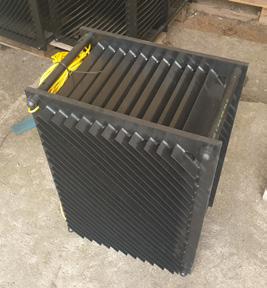
expensive to upsize an oil separator to treat stormwater that is not, essentially, contaminated. We normally isolate an area (for instance where trucks fill up with diesel) and have two stormwater drainage systems – one that diverts the clean stormwater (outside the isolated area) to a stormwater drainage system and one that diverts the dirty stormwater (inside the isolated area) to the separator and then typically sewage drainage system," he adds. However, there is always a risk with higher than normal stormwater flows. While engineers typically design flow rates based on a set storm event, say for example, the one-in-5-year or sometimes up to one-in-50-year flood events, these systems would
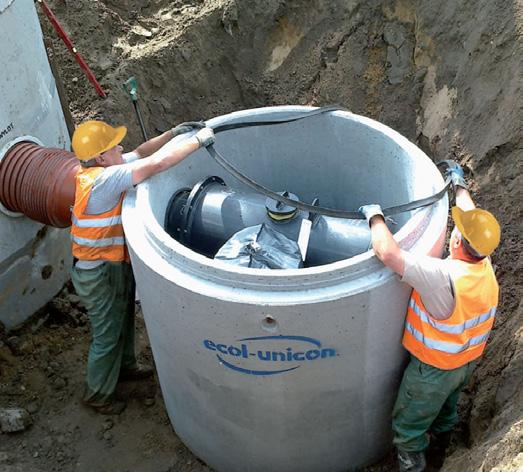
not be capable of handling a onein-100-year or greater flood events.
“In such cases, the unit can become overwhelmed, with overflow causing previously separated oil to be flushed out. To manage this risk, one would usually incorporate an additional “overflow” concrete tank upstream of the separator to handle this flow that exceeds the design conditions of the system," states Kretzmar.
Recognising this challenge, Rocla has introduced its new Ecol-unicon ESK-B II coalescence separators, which come equipped with an internal overflow bypass to negate the need for an additional upstream concrete tank.
“These units can manage higher design flows than our current range and are hence ideal for regions like Gauteng that experience heavy, intense rainfall events. The integrated overflow bypass enables excess inflow water to skip the oil separation chamber and flow directly into the drainage system or watercourse once the design flow rate has been reached and surpassed.
“We can now design a separator to operate at a design flow rate of, say 50 litres per second, where the system will then be able to manage a storm event with a peak flow rate of up to 500 litres per second without the risk of already separated contaminants being flushed out of the system,” says Kretzmar.
He adds that it is important to note that the bypassed water, which is above the design flow rate, will not undergo treatment via the filter unit.
“The underlying principle is that the filter is designed to effectively handle the initial flush, during which the majority of contaminants are captured
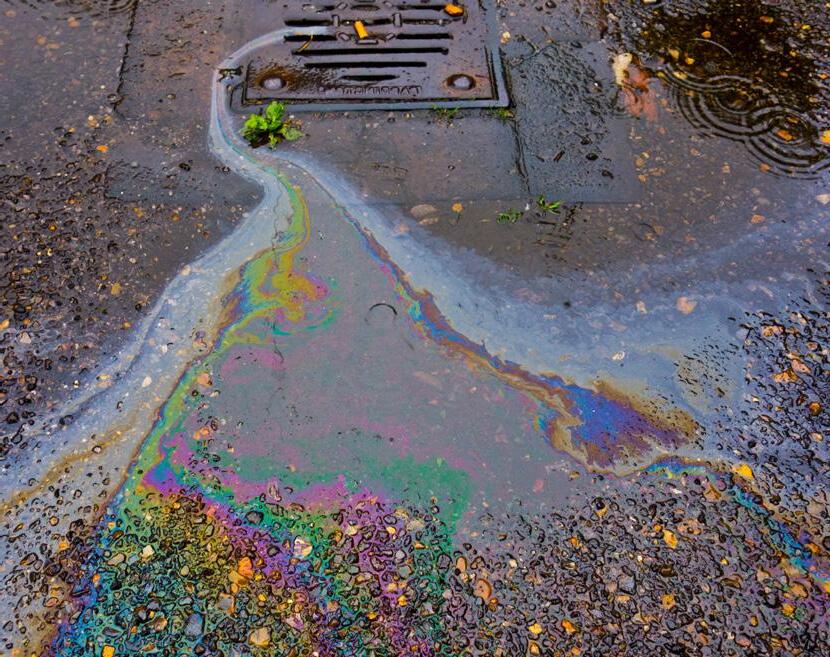
before the overflow is activated. The bypassed water will, for the most part, be clean.”
Another exciting product from the new range is the Ecol-unicon ESL-Z lamella separator that has multiple coalescing plates as opposed to a sponge-like coalescing media. The separation of pollutants here occurs during the multilayer flow of water through all these plates. As with the coalescing filters, the plates used in these separators are boxed as a removable element, equipped with handles that allow them to be pulled out of the device, allowing for hassle-free maintenance.
“Like the Ecol-unicon ESK-B II, there is no risk of contaminated oil being discharged during a rainfall event up to 10 times the design flow. But the Lamella goes one step further in that it will also continue to treat the overflow volume, obviously reducing in efficiency as the flow rate increases,” states Kretzmar.
When oil enters municipal water systems, it can quickly spread through sewer or stormwater networks and contaminate rivers, wetlands and groundwater.
How the oil separators work SANS 50858: separator systems for light liquids (example, oil and petrol) differentiates between class I and class II separators. Class II units are purely gravity systems rated to a maximum permissible content of residual oil in the effluent of up to 100 ppm. Class I units on the other hand, includes filter media such as coalescing filters and hence offer far greater separation, with residual oil content no greater than 5ppm.
Class I separators are designed to separate non-emulsified light liquids or low-water-soluble fluids with a specific gravity below 0.95 (such as gasoline, diesel, heating oils and other mineral
oils) from effluent discharge. The two-step separation process involves a component of gravity separation but predominantly removal of the small oil particles by adsorption within the coalescing media elements.
In the separation chamber, fine droplets that are too small to be separated by gravity alone are accumulated inside the filter media into larger droplets that will then rise to the surface.
Concrete tanks
All oil separator filters are fitted inside Rocla’s precast concrete tanks and supplied as double tank systems. The first tank being the grit/sedimentation
separation chamber with the second tank constituting the oil separation chamber.
“Concrete tanks are a better long term solution to alternatives as they are stronger, more durable and provide better protection than plastic tanks, with no risk of shifting in high groundwater conditions,” says Kretzmar.
The grit/sedimentation chamber is the first line of defence, designed to settle out floatable litter and solids such as sand, gravel, silt, and other debris before the water enters the second treatment phase. This ensures that the oil separation tank does not suffer reduced operating volumes and potential damage to the filter media from abrasive particles.
SANS 50858 specifies three different size requirements for the grit tanks based on the type installation and hence expectant levels of contamination. All three sizes are available for the new range of filters except for very high flow units where the larger grit tanks are not feasible to be precast.
“Our systems do not require electricity for operation and there are minimal moving parts – only for the float mechanism that closes the outflow valve should the maximum depth of separated oil be reached. Depending on the installation and the amount of daily/ weekly contaminant passing through the system, the coalescing filters should be removed and washed every couple of weeks or months but this is typically advised by the recyclers,” explains Kretzmar.
He adds that oil recycling companies contracted to visit a client’s site will, (after doing dipstick and visual
inspections), usually recommend when maintenance is needed. “These recyclers will drain the grit/sedimentation chamber by firstly draining the water and then removing the sludge. The oil will then be drained from the separation chamber along with the remaining water at which time the filter media will be removed, cleaned and replaced. The entire system will then be flushed until clean and then filled with water and returned to service. I always suggest that my clients have a spare coalescing media filter cartridge that can be swapped with the dirty unit which can then be cleaned and put on the shelf until the next cleaning cycle where they will be rotated once again.”
Rocla will continue to sell its popular ecoTechnic range of oil separators. “They have had great success within the local mining industry as these filter units are made out of stainless steel and hence very robust. They are German manufactured products that comply not only to European standards but also to the German specification (DIN1999) that requires these filter units to have a fire rating. They are well known and respected but limited to maximum flow rates of 20 litres per second in South Africa as these are the largest tanks that we can viably precast,” says Kretzmar.
He further adds that the new Ecolunicon range conforms to the EN858 specification with units made from HDPE, making them smaller, lighter and more financially feasible for smaller business owners of car washes, petrol stations, and transport companies.
The units are also available in a wider range and higher flow rates
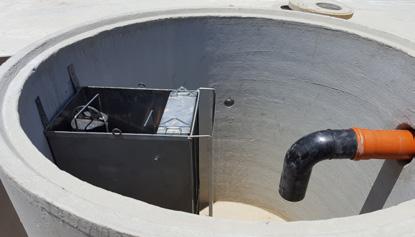
ranging from 1.5 litres per second up to 100 litres per second, with overflow capacities from 30 litres per second up to 1 000 litres per second. “We now have a very wide range of systems with pricing ranging from the smallest Ecol-unicon 1.5 litres per second unit at an entry level price of approximately R70 000 (excluding vat, installation and transport), ranging up to about R700 000 for the largest ecoTechnic system.”
“We will also continue to market and recommend the ecoTechnic ADD (Automatic Draw Off Device) unit that can be fitted to any filter system. This sits inside the oil separation tank and relies on different liquid densities and a system of floats, that opens and closes its valve to automatically tap the separated oil from the surface of the tank, out the tank and into a separate receptacle that will hence be filled with only separated oils,” explains Kretzmar. Rocla’s expanded range of oil and grease separator systems offers a comprehensive, cost-effective, and environmentally responsible solution for managing oil-contaminated runoff across a wide variety of applications. With options suited for both highand low-flow scenarios, enhanced by intelligent design features like internal bypass systems and easy-tomaintain components, the new range empowers designers and site operators to meet stringent environmental standards while minimising long-term operational costs and risks.
The grit/sedimentation chamber is the first line of defence, designed to settle out floatable litter and solids such as sand, gravel, silt, and other debris before the water enters the second treatment phase

Flottweg decanter technology is transforming how municipal wastewater plants manage sludge – making operations cleaner, more compact, and more costeffective. With two decades of industrial experience, Porex SA is now helping municipalities tackle long-standing challenges in sludge treatment.

Building on extensive industrial-scale wastewater experience in wineries, breweries, and beverage production, filtration and separation specialists Porex SA have now extended their services to the municipal wastewater sector.
“We are the supplier and agent for Flottweg, a German-based company that is a leading manufacturer of mechanical separation technology and have had great success with their decanters over the years with our industrial clients, and have found that they are well suited for municipal wastewater,” explains Johan de Jager, technical sales manager, Porex SA.
He adds that the Flottweg OSE (optimum sludge thickening) decanters achieves considerably better separation qualities than other centrifuges. “This is not new technology, it has been successfully implemented in the United States, Europe and the Middle East for over 30 years.”
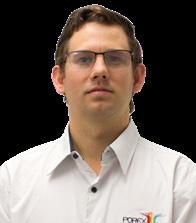
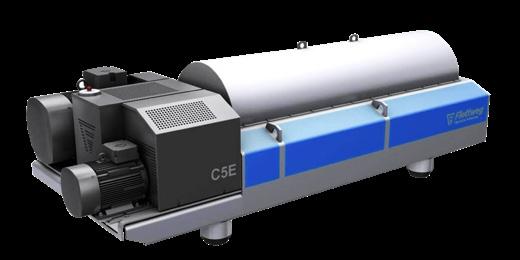
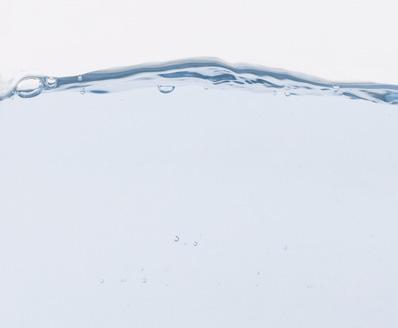
Decanters vs belt presses for municipal wastewater plants Flottweg decanters use centrifugal forces to separate solids from liquids. The new patented design Flottweg Xelletor deep pond decanter is now also available. They are more efficient than most belt presses at separating solids from liquids, typically achieving higher dry solids content in the sludge cake. This means less volume to dispose of, which can reduce transport and disposal costs.
“The Flottweg OSE decanter is a closed system, minimising odour and exposure to pathogens while belt presses are open systems and require more attention to cleaning and hygiene. Furthermore, the Flottweg OSE is compact, about 1/3 of the size of a belt press system, which is a major advantage in plants where space is limited. Lastly, the Flottweg OSE decanter is easier to maintain as there are less moving parts (four bearings) than a belt
press (between 30 and 40 bearings). This decreases the time needed to maintain the decanter,” states de Jager.
Other advantages include the fact that the Flottweg OSE decanter consumes less power and needs less polymer than a belt press. Programmable logic controllers can facilitate the fully automatic start-up, operation, and shutdown of the decanter. Operators don’t need to manually adjust parameters, which reduces human error and labour costs. The decanter can easily work 24/7 without supervision.
“Furthermore, Porex SA has a team of six millwrights that service all equipment
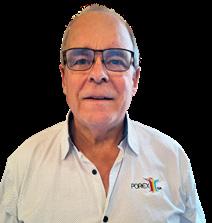
and can attend to any breakdowns. While purchasing new equipment may be easy, maintaining it over time is far more challenging. That’s why we go the extra mile to support our customers – offering reliable backup and technical assistance to minimise downtime, because we understand that our clients can’t afford interruptions to their operations,” says Sakkie Smit, responsible for municipal wastewater treatment, Porex SA.
How the Flottweg OSE decanter works A decanter centrifuge can be viewed as a settling pond wrapped around an axis. In the settling pond, solid particles, which are heavier than the liquid, settle to the bottom driven by gravity and build up a sediment layer on the bottom of the pond. In the rotating bowl of the centrifuge, solid particles, which are heavier than the liquid, move to the inner diameter of the bowl driven by centrifugal force and build up another sediment layer on the inner surface of the centrifugal bowl. Since the centrifugal force in the decanter is approximately 3000 x g instead of 1 x g in the gravitation field, separating solids from a liquid in a centrifuge becomes much faster and more efficient.
Flottweg OSE decanters are available for capacities ranging from 8 to 250 m³h (90 to 1100 gpm) per unit.
Management of sludge
Sludge mismanagement is a significant challenge in many municipal wastewater treatment plants across South Africa. Inadequate infrastructure, aging equipment, and limited technical capacity often lead to poor handling, treatment, and disposal of sludge. As


a result, untreated or partially treated sludge is sometimes dumped in landfills, released into the environment, or stored in overflowing settling plants –posing serious environmental and health risks. Often sludge is transferred from one wastewater treatment plant to another plant.
“By using a decanter, sludge can eventually be reworked into dry solids and then further treated, turning it into a valuable resource (biogas, soil conditioner, building material) rather than just a waste product,” explains Smit.
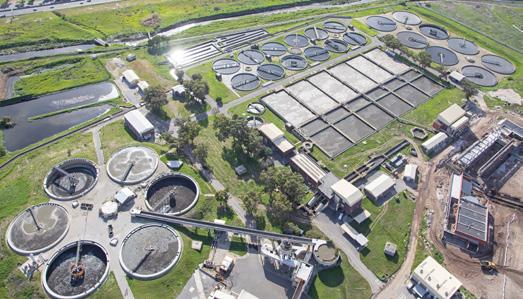
Porex provides both dewatering decanters and thickening decanters. “The thickening of excess sludge is often not given the attention it actually deserves. Thickening is an important process stage that affects the removal of sludge from the secondary clarification plant as well as the feeding of a digester. Thickening is usually done before digestion, dewatering, or final disposal to reduce the volume of sludge handled in downstream processes. It is done to increase the bacterial count in the sludge, increasing its efficiency in the digester. With the Flottweg OSE decanter, surplus sludge generated during the biological stages is concentrated from 1% or less dry substance content to 5 – 8% before it is pumped into the digester. As a result, the amount of sludge is reduced by 90 to 95%,” adds de Jager.
As municipalities across South Africa face mounting pressure to modernise wastewater infrastructure and improve environmental compliance, efficient sludge management has become a critical priority. Advanced decanter technology offers a compact, hygienic, and costeffective alternative to traditional systems – helping plants reduce operating costs, improve sludge quality, and unlock new value from waste.


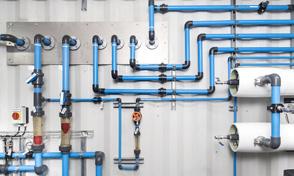
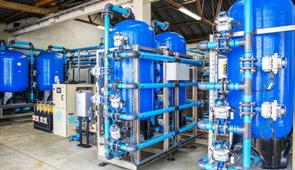
In South Africa, there is a growing demand for decentralised water and wastewater treatment plants as the country grapples with increasing pressure on water security. NuWater, a Cape Town based original equipment manufacturer and turnkey purification specialist is at the forefront of this shift.
Both businesses and residents are looking at creating their own water sovereignty.
Most of South Africa’s water and wastewater treatment plants were built decades ago and have not been adequately maintained or upgraded to meet rising demand or increased levels of industrial and sewage pollutants in water,” states Billy James, managing executive, NuWater. With over 150 reference sites in South Africa, Mexico, Singapore and other parts of South East Asia, NuWater is a technology-led engineering company that
By Kirsten Kelly
designs, builds, finances, operates and maintains water treatment plants.
“Conventional treatment plants are no longer equipped to effectively remove new pharmaceutical residues and toxic chemicals found in our water and wastewater – but our advanced, technology-driven solutions are designed to do just that. While conventional, centralised treatment plants are designed to treat water and wastewater quality with a narrow set of parameters, our systems are far more flexible,” explains James Morisse, business development manager, NuWater.

Billy James, managing executive, NuWater
This level of innovation is particularly crucial as many new estates and developments are facing significant challenges in managing their wastewater, as nearby municipal infrastructure is either non-existent, already operating at full capacity, or too far away to connect economically. In many cases, there is simply nowhere for these developments to send their wastewater, creating a pressing need for onsite or decentralised treatment solutions.
A major advantage of decentralised treatment plants is their rapid deployment – they can be commissioned within a few weeks, compared to the years it often takes for traditional centralised plants.
Assessing needs, delivering solutions “Typically, by the time a customer approaches NuWater, they are already facing a
Morisse, business development manager, NuWater
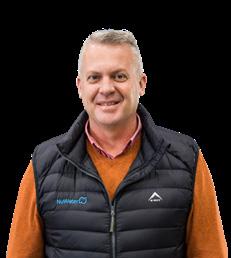
problem – either they have no access to water, insufficient supply, or their water is contaminated. If an analysis hasn’t already been done, NuWater conducts a site visit to assess the water chemistry and determine the exact volumes that need to be treated and the level of water treatment. The site’s layout, topography, and available space are carefully assessed, along with how to design a plant that is easily accessible for maintenance and servicing. From that point onwards, we provide an estimated scope and cost of the solution,” says Billy James.
This is important, as some solutions can be costly. Providing a rough upfront estimate allows the client to quickly determine whether the solution is viable. If it is, NuWater will then proceed with detailed engineering and design work. From there, the plant will be built, installed, and commissioned. This is normally done within eight to 12 weeks. However, they have delivered very complex plants within six weeks.
NuWater may operate the plant for a short period, followed by training and a formal handover process. The company also has a national operations centre where all of its plants are monitored remotely, enabling pre-emptive maintenance, rapid fault detection, and performance optimisation. They offer a comprehensive service that includes supplying chemicals, performing maintenance and support, and even reconfiguring plants at a later stage if required.
James Morisse adds that NuWater is developing a ‘four-dimensional system’ designed to flag unusual events within a treatment plant and correlate them to enhance predictive analysis. “For example, a rise in pressure combined with reduced power consumption by a pump could indicate that the system needs cleaning.”
At times, when a plant has a tight, compact design, NuWater also uses virtual reality to ascertain if it can be easily serviced. It’s also beneficial for the client to have a clear understanding of what the final outcome will look like.
Since NuWater provides custom-designed and engineered solutions, the more information a client can share, the more precisely the company can design a plant that is truly fit for purpose. Will additional capacity be needed in the future? What is the intended use of the treated water? Could that use change in the coming years? Does the client have existing infrastructure in place? Are there specific regulatory requirements they must meet – such as those related to exported goods? Clients sometimes have specific norms and standards that are either developed internally by their company or are unique to the industry in which they operate.
“Many of our customers want a containerised solution, but this is not the only option. Our plants can be built onto a frame. Containers are expensive and will drive up the cost of the end product,” maintains Billy James. “Another cost saver could be to use existing infrastructure. For instance, many industrial companies can repurpose their existing tanks or use their own plumbers and piping teams. We are also brand agnostic and open to using various pump or electronics brands, provided they are high quality, readily available, and supported with reliable after-sales service. We also look at the application. There are many instances where cheaper PVC piping can be used instead of stainless steel piping. ”
However, James Morisse emphasises that NuWater will not compromise on the treatment membranes, as they
are at the very core of the treatment process. If they fail, the entire plant could come to a sudden standstill. “Over time, water treatment membranes naturally degrade, leading to reduced performance and efficiency. Recognising this, we take a forward-thinking approach by designing our treatment plants as if the membranes are already three years into their operational lifespan. This means the system is engineered to perform optimally even with aged membranes, allowing for consistent treatment quality over time. As a result, when the plant is first commissioned with new membranes, it operates with a built-in performance buffer. This not only extends the functional life of the membranes but also reduces the frequency of replacements, lowers operating costs, and ensures long-term reliability of the entire treatment system.”
Life time warranty for the process NuWater is so confident in its plant designs that it offers a lifetime process warranty – provided the plant is operated according to the owner's manual, routine maintenance is performed, and the treatment process remains unchanged. This assurance is possible because NuWater maintains full control over every stage: from design and manufacturing to commissioning.
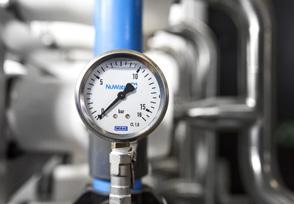

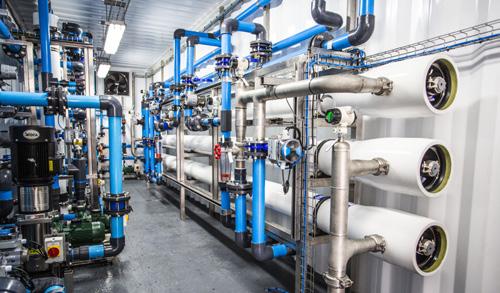
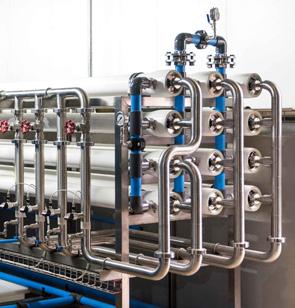
Individual crises can seem easier to navigate than multiple interlinked crises. Unfortunately for South Africa, its big three crises, water, energy, and food, are interlinked. This nexus is an obstacle for the country to overcome. Understanding both the nexus is the first step in unlocking holistic solutions.
Compounding water and energy crises affect agriculture in South Africa, a

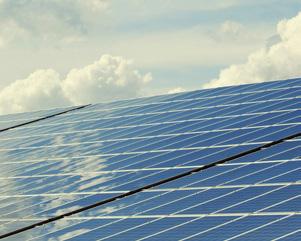
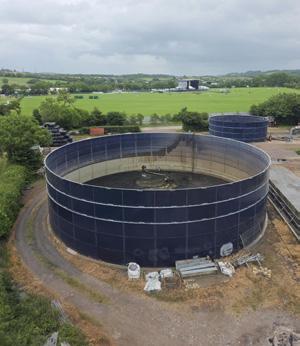
Water Research Commission’s Jay Bhagwan says, “fragmented and linear approaches to water, energy, and food are shortsighted. When we introduce sustainability as a key parameter of solving these crises, we

can see how they are interconnected and how cheap energy, cheap water, and cheap food are growing as a challenge to the country.”
While water, energy, and food can seem mutually exclusive, understanding these as forming a nexus is crucial to resolving the crisis. Bhagwan adds, “Energy requires water, often large volumes of it for fuel production or mining, for hydropower, for power plant cooling. On the other hand, energy is also needed
to move water, pumping, treatment, distribution, as well as collection, safe discharge of wastewater and plenty of other activities. So you know, in turn, we see that there is this deep connection between energy and water resources, and both of these are required to produce food


South Africa’s solar industry growth was due to the increased demand for reliable renewable power
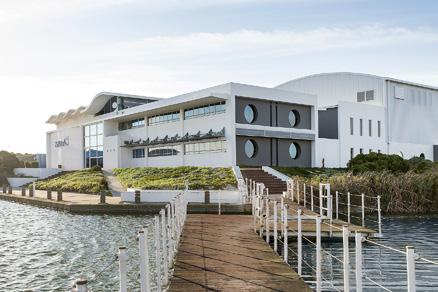
as well.” The stress of the water sector threatens energy, which compounds the water crisis, and this threatens food security. Putting this into perspective, 60% of South Africa’s fresh water is used in agriculture, a sector that is greatly responsible for the country’s economy in terms of employment and production.
Perspectives from the financial sector
Asking anyone in the water or energy sector what a key challenge is usually results in them answering, ‘financing and funding.’ For Derosh Maharaj, executive head of energy, infrastructure and mining for Standard Bank, financing is ever-changing and adapting to the market. He says, “For a few years now, financing around water and energy has shifted towards themes of sustainability. If you wanted financing, you had to highlight the sustainability of the project, and this wasn't always the case. Financing is dynamic, and as trends emerge and become viable, the financing moves towards that. Where at one point cost was a driving factor, sustainability is starting to drive businesses' decisions.”
This leads to an optimism around South Africa’s biggest challenges, whereas the general public and businesses become more aware, their consumer power leads the financing towards sustainable solutions, which in part aid the fight against the crisis. Where sustainability can incur greater costs, Maharaj says, “With enough time and support ecnomcies of scale kick in, if you look at solar in South Africa, the cost has gone down due to demand and supply, and if we look at other alternative energy solutions like batteries we can foresee a similar trajectory.”
However, water is a more difficult sector to leverage financing for, and for years, alternative water solutions were deemed very risky. Maharaj adds,” As financiers, we struggled with water due to the lack of commercial viability, but when Cape Town hit Day Zero, we all had to evaluate our stance and take water very seriously. We had to figure out how to support businesses and come up with alternatives.”
While finance looks at returns on investment, the sudden water crisis in Cape Town reframed the conversation from ‘how do we make water a viable sector’ to ‘what are the costs of not securing water?’ This rephrasing allowed water to pick up pace in the financing world, and while Maharaj notes that water is lagging behind energy, the growth is tangible, and it is only looking to grow.
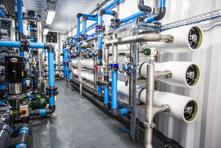


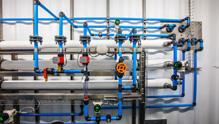
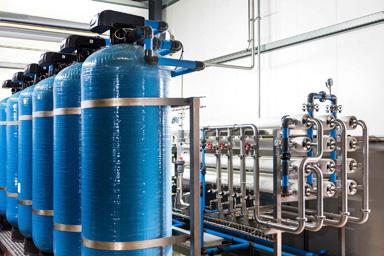
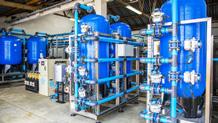
Supplying 2010 MW and 6400 GWh hydro-electric power per annum to parts of both Zambia and Zimbabwe, the Kariba Dam is a crucial piece of infrastructure for both countries. It also supports industries like mining, agriculture, fishing, and tourism. Importantly, the Kariba Dam is a vital water reserve in a region where droughts are common.
Kirsten Kelly
The Kariba Dam is located on the Zambezi River, which forms the border between Zambia and Zimbabwe. Based on reservoir capacity (180,600 hm3), it is the largest dam in the world. With structural failure looming due to erosion, urgent rehabilitation was essential to preserve this critical infrastructure and protect millions of lives across Southern Africa. By
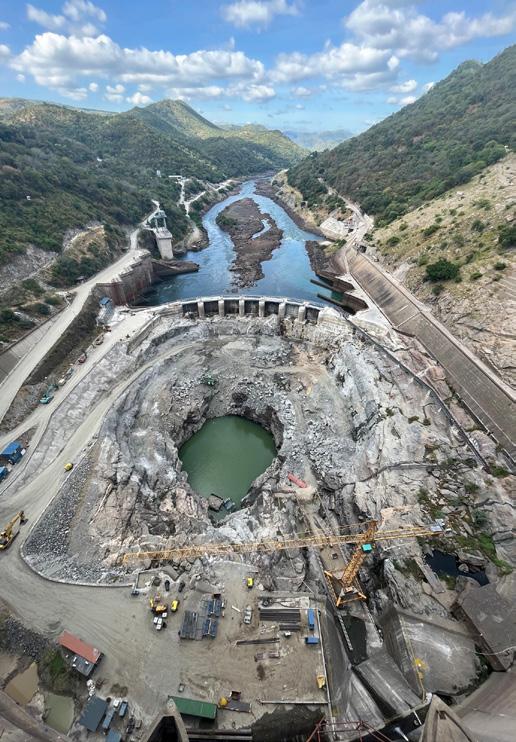
The dam was built on a seemingly solid bed of basalt. But, over the past 70 years, the force of water cascading from the sluice gates gradually eroded that bedrock, carving a 91 m deep pit – or plunge pool – at its base. The pool was around 40 m from the structure’s foundation. If it reached the foundation, the dam was likely to give way. If that happened, a tsunami-like wall of water would rip through the Zambezi valley, reaching the Mozambique border within eight hours. The torrent would overwhelm Mozambique's Cahora Bassa Dam and knock out 40% of southern Africa's hydroelectric capacity. Along with the devastation of wildlife in the valley, it was estimated that the lives of 3.5 million people are at risk.
Kariba Dam Rehabilitation Project (KDRP)
This necessitated the KDRP. The project’s goal was to guarantee the structural integrity of the Kariba Dam, assuring the sustained generation of power primarily for the benefit of the inhabitants of Zimbabwe and Zambia and the broader Southern African Development Community area. A key component of KDRP involved improving the stability of the plunge pool and reducing the backward scour towards the dam foundations. This was done by enlarging the plunge pool and safeguarding the dam's downstream toe with a concrete lining.
Dry working conditions and pier construction
The first challenge to this project was the need for a dry working area inside a river. The solution was a cofferdam, a temporary enclosure built within or next to a body of water, designed to allow the enclosed area to be pumped dry. The 25-metre-deep cofferdam was constructed across the Zambezi River, downstream of the main Kariba Dam wall, allowing the deep


plunge pool at the base of the Kariba dam to be drained, reshaped and stabilised. These were the first works of this kind in the world that were implemented on an existing dam.
The riverbed was cleared at depths of up to 25 m using heavy machinery. Extensive underwater surveys were done to ensure stable foundations for the nine piers. Once constructed and positioned, prefabricated metal gates called stoplogs were positioned between the piers to form the cofferdam
There were difficulties in finding bedrock for the piers near the dam’s right bank by the Zimbabwe border, which meant that 22 000 m3 of concrete had to be placed underwater.
This process took 6 months to complete. It involved pumping concrete to form 25 m deep and 15 m wide areas, with divers handling the 125 mm diameter tremie pipe to place the gravity-fed concrete.
The hydroelectric pumps caused strong currents to flow, making this task nearly impossible. The construction team worked with Zimbabwe’s Kariba Power Station, agreeing to switch off the turbines while they worked.
Nine piers were constructed, with six measuring 15 m x 4.5 m and three measuring 18 m x 4.5 m. These were slip-formed as hollow structures, designed to house 13-meter steel stoplogs for water control. The piers were constructed in stages using high-quality watertight concrete, incorporating CHRYSO® Omega 162, which enhanced workability
while minimising excess water for improved durability. CHRYSO® Fuge B, a permeability-reducing admixture, was used to prevent water penetration, critical for submerged structures.
Each pier was positioned using submerged lifts, filled with water for sinking, and then permanently secured by being filled with concrete. This arduous process – which took six months and was completed in September 2023 – involved pumping concrete to 25 m deep and 15 m wide, with divers handling the 125 mm diameter tremie pipe to place the gravity fed concrete. Crocodiles were a concern. Some of the bigger crocodiles were safely captured and relocated but the divers had to be aware of the remaining crocodiles.
To withstand strong currents and maintain long-term stability, the piers were anchored using 48 permanent strand anchors, each containing multiple highstrength steel cables.
Underwater concreting and abrasion resistance
Working with concrete underwater posed challenges such as washout, segregation, and reduced visibility. To counteract this, CHRYSO® Aquabeton ZA was incorporated, improving concrete cohesion and minimizing cement loss. CHRYSO® Quad further enhanced viscosity and reduced material separation. The construction team also conducted ASTM C1138 abrasion resistance tests, a first for South Africa, ensuring the concrete mix could withstand high-velocity water erosion.
Fault line reinforcement and thermal management
To address a fault line near the dam, 600 000 m³ of high-strength concrete was used to construct a massive reinforced sarcophagus, equivalent to an 18-story building. The concrete wall shielding the fault was 90 meters high, 45 meters wide, and 2.5 meters thick, anchored into the rock using 40 mm diameter steel anchors. CHRYSO® Omega 162 and CHRYSO® Fluid Optima 206, combined with fly ash and silica fume, helped regulate hydration temperatures, preventing thermal cracking in the intense 40°C heat. A chiller plant pre-cools the aggregate and mixing water to control temperature rise.
Precision and quality control
The project required extensive laboratory testing, with an ISO 17025-accredited lab set up onsite. Concrete slump tests were conducted at the batching plant and again before placement to ensure consistency. Materials were also sent to South Africa for further abrasion testing.
The Kariba Dam Rehabilitation is a testament to advanced concrete engineering, ensuring the dam’s long-term resilience and continued power generation for millions in Southern Africa.
The project used over 600 000 m³ of concrete, which allows for this critical piece of infrastructure to continue serving Zambia and Zimbabwe. The project was massive in scope and incredibly difficult to achieve, earning it a Fulton Award from the Concrete Society of Southern Africa. CHRYSO submitted to the project to be judged under projects over R100 million, and the ingenuity and techniques used beat out the competition.
When the piers

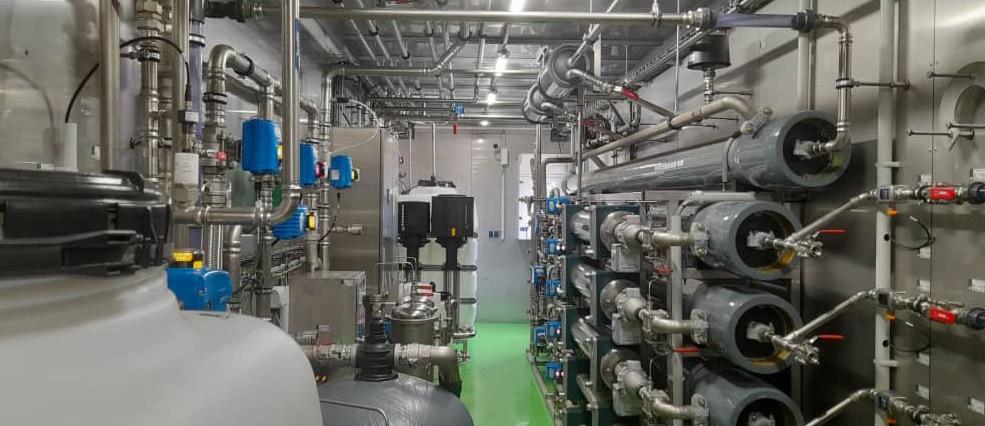
Leachate is a contaminated liquid formed when rainwater or moisture percolates through waste, absorbing various pollutants. Its complex and variable nature makes treatment difficult. Kirsten Kelly speaks to Dr Nthabiseng Motsoane, EnviroServ’s national technical manager, to discuss the challenges of leachate treatment and methods used to manage it effectively.
Leachate management often begins before the leachate is even produced. “In our landfill cells, we have a network of collection pipes, sumps, geomembranes and grid-net detection systems that are designed to protect the environment from leachate. Furthermore, we often pre-treat any liquid waste before it is disposed of at our landfills. For example, oils are stabilised with natural additives to form a solid mixture,” says Motsoane. EnviroServ has also adopted progressive capping of its landfills. This

is the covering of a landfill area with a barrier layer during its operational life. The progressive capping minimises the area of waste exposed to water and so reduces precipitation ingress as well as emissions from a landfill area. Any rainwater on top of the barrier layer is then collected through a stormwater drain as it is not contaminated by waste. This significantly reduces the volume of leachate that EnviroServ landfills generate.
The variable nature of leachate
Motsoane explains that each landfill or in EnviroServ’s case, integrated waste management facility, produces a unique type of leachate, which requires a tailored treatment approach. “The chemical composition of leachate differs from site to site depending on the waste streams accepted. Leachate at our Holfontein waste management facility differs to that at our Chloorkop waste management facility.”
An added complexity is the changing chemical composition of leachate over time, with chemical oxygen demand
(COD) and biological oxygen demand (BOD) levels diminishing as the leachate ages. Increased levels of salts, heavy metals, ammonia, and nitrogen may be observed during the later stages of leachate development.
Each landfill must be assessed on a case-by-case basis, considering its operational history and the nature of the waste it has received – whether organic, inorganic, or a combination of both. The chemical composition of the resulting leachate should be thoroughly analysed for each site before deciding on a treatment option – keeping in mind that the end product after treatment must legally comply with discharge standards. These discharge standards often differ from province to province.
Motsoane strongly recommends the pretreatment of leachate before using reverse osmosis. “Typically, a biological treatment would be applied to leachate before using membranes where one would use micro filtration, followed by ultra-filtration, nano filtration and
lastly reverse osmosis (RO). RO membranes are semi permeable, extremely sensitive and can easily foul. While RO membranes extract most salts, they cannot completely remove ammonia. Therefore, biological treatment should be used at the beginning to break down the nitrogen.”
A biological treatment method used by EnviroServ at one of their sites is an anaerobic sequencing batch reactor (SBR). This is well suited to leachate that is high is ammonia. The ultra-filtration membranes remove the suspended solids, and total dissolved solids (TDS).
“Other pre-treatment options (before RO) include chemical or physical precipitation. In Uganda we receive both water-based and synthetic-based slops from a client that we must treat before sending it to a landfill. We coagulate the water-based slops using a polymer and chemical, where the solids sink to the bottom and the water rises to the top and is then extracted. Synthetic-based slops that contain oil has a lighter density than water, so the water has to be extracted from the middle,” adds Motsoane.

broader expertise.
“We engage with international technical experts on almost a daily basis,” says Motsoane.
Leachate treatment plant in Uganda
EnviroServ recently commissioned a leachate treatment plant in Uganda in order to ensure high-quality water recovery while adhering to stringent National Environment Management Authority (NEMA) regulations. The facility utilises advanced two-stage RO technology, designed to process up to 450 m³ of wastewater per day. The recovered water is used for dust suppression and flushing toilets, providing significant value given the landfill’s remote location and limited water access. Some of the treated water is even sold to nearby businesses.

first EnviroServ has an excellent health and safety record and is aligned with bestpractice global standards.
EnviroServ uses a leachate evaporation system as well as membrane technology at their sites.
As a SUEZ company, EnviroServ has gained even more intellectual property, skills and knowledge into leachate management, with global references and
“Although the water quality after the first RO treatment is already high and meets or exceeds discharge standards, we installed a second RO system to provide an additional level of assurance,” states Motsoane.
This commitment to quality is matched by an equally strong focus on safety.
“If untreated, leachate can be hazardous substance, and anyone handling it is trained accordingly and always wears the appropriate personal protective equipment. I am very focused on keeping all treatment plants clean, with everything clearly labelled. Safety incidents are usually caused by the simplest of errors, and a clean site is a safe site,” emphasises Motsoane.


Water and energy are interdependent resources; they rely on and inform each other, which necessitates integrated planning, particularly in the face of climate change.
For Eskom, South Africa’s largest energy utility, water security is paramount to its energy operations.
By Duncan Nortier
Gabi Mkhatshwa, senior manager for climate change and sustainable development for Eskom, notes, “Eskom is a strategic water user, which grants the entity 99.5% assurance of supply. Eskom utilises approximately

3% of South Africa’s freshwater sources, primarily sourced from the Integrated Vaal River System. We use 270 000 000 m3 per annum for our operations. For us, water is as important as coal; without it, we cannot generate electricity,” says Gabi Mkhatshwa, senior manager of climate change and sustainable development at Eskom.
Water is a primary resource used in the generation of electricity. Eskom’s coal base load power stations are located inland, and use raw fresh water for:
• Cooling: Cooling the generation units.
• Steam generation: The coal burned evaporates water that turns the steam turbine, generating electricity.
• Ashing: Managing burnt coal requires mixing the ash with water and storing it.
• Washing and,
• Air emission and abatement: Water used to reduce emissions
Mkhatshwa adds, “Wet cooling represents a substantial portion of our water use, and while inland we are reliant on freshwater assurance, at stations like Koeberg, seawater is used, Water quality is crucial for Eskom, and mitigating environmental impacts is just as crucial for us.”
Water agreements
Eskom’s long-term water security is assured through various water supply agreements, a bulk water license, and augmentation projects.
• Eskom’s agreement with Rand Water is pivotal, and the existing agreement has been extended to April 2038.
• The Vaal River Eastern Sub-Systems agreement lasts until April 2026, but there are negotiations in place for a new agreement of 11 years.
• The Komati Water Scheme expires in March 2034.
• Eskom’s bulk water abstraction license for the Integrated Vaal River System has been submitted to the Department of Water and Sanitation (DWS) for renewal by June 30th, 2025.
• Eskom’s Mokolo River System bulk water abstraction license was renewed by DWS and expires in 2051.
Water supply assurance and the various licenses do not mean that Eskom can misuse this water; the energy utility has internal mandates that govern water efficiency that predate the current climate-focused resilience. “In 1989, Eskom used 1.9 litres (ℓ) per kilowatt (kW) sent out; we have improved our water efficiency to 1.47 ℓ per kW sent out, and we have an internal target of 1.38 ℓ per kW sent out. Technological solutions, effective water management policies and procedures have improved our efficiency, specifically dry cooling and ashing systems that do not heavily rely on water,” says Mkhatshwa.
Despite the improvements, Eskom still faces several obstacles regarding its water use. Eskom's water management strategies and plans are not
implemented consistently Mkhatshwa adds, “An example is the Zero Effluent Liquid Discharge plan, while it is in place, we have minimal water reuse and recycling.”
Climate change and energy transition
The impact of emissions from coal power on the environment has led South Africa to pursue a diversification of its energy mix, primarily led through the Just Energy Transition (JET). “The diversification of the country’s energy mix away from coal primarily will significantly reduce Eskom’s water footprint over the next 10-15 years,” says Mkhatshwa.
Water supply assets are integral to South Africa’s water security, and DWS, Eskom and Sasol have launched a joint task team to manage bulk infrastructure assets to preserve and build the water security needed for continued operation. Mkhatshwa says, “South Africa must deal with years of poorly managed municipal infrastructure, water losses, and insufficient storage, as this affects us as Eskom and as every South African.

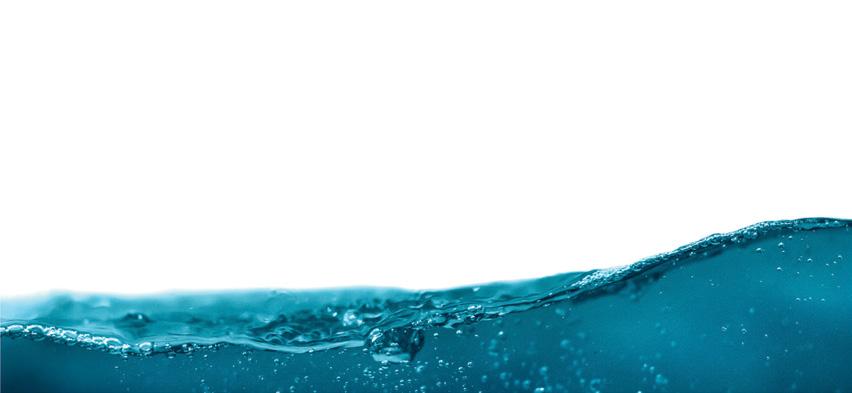

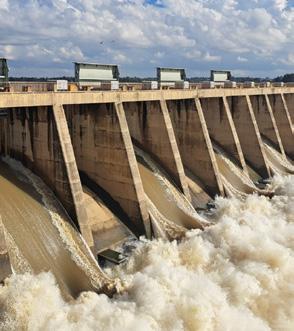
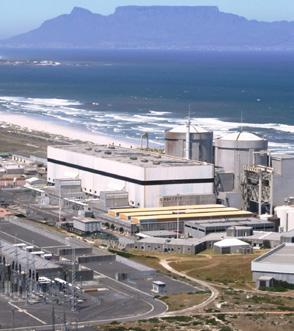
Climate change is now an additional worry as the droughts and extreme weather events threaten not only the supply of water but also infrastructure, we need as a country.”
The asymmetric and disproportionate effects of climate change mean that South Africa warms at twice the global average rate. An already water-scarce country, climate change threatens to:
• Decrease the average precipitation
• Increase the frequency and intensity of floods
• Increase heat waves
• Increase and prolong droughts Mkhatshwa adds, “As well as these national concerns, there are regional and local climate risks we face. Areas prone to wind will see increases in wind speed, which impact on our infrastructure, and along the eastern coast, there is an aggravated risk of stronger and more frequent tropical storms. This is not to say this going to happen in future, this is happening now, and we are feeling the impacts.”
Climate risk mitigation and strategy Eskom’s approach to climate change involves three steps:
1) Understand the risks as comprehensively as possible and ensure that the measures put in place are achievable. This is detailed in Eskom’s climate change policy, strategy, and adaptation procedure, which are adopted across the entity.
2) Ensure that these guiding documents are understood by all employees, and how their operational processes are impacted by climate and how the strategy shapes new practices and goals.
3) Review the strategy and procedures by monitoring operations, and how they adapt or fall short. Monitoring and evaluation of implementation is critical in informing progress and necessary adjustments responding to the constantly evolving climate space. “The hard work is ensuring the data and information we get is credible and valuable. We speak directly to employees, stay on top of trends, look at other case studies, and ensure that the policy we craft is not only adequate but also context-specific and workable. If the challenging work is done at this step, it becomes easier to implement and monitor our solutions,” says Mkhatshwa.
Eskom’s adaptation journey
Initially Eskom’s strategy was informed by mitigating climate change, but as time went on, Eskom adopted a systematic approach incorporating adaptation they realised that they had to shift their focus to dealing with the current reality of climate change instead of some future prospect. Mkhatshwa adds, “By looking at active risks we could monitor and adapt in shorter time periods, and work towards long-term goals. In 2015, we worked with the Council for Scientific and Industrial Research (CSIR) to properly understand our risks, vulnerabilities, and the actual impacts of climate change on our operations. While we have been looking at this for a while, we are still in the infancy of our climate risk strategies, and there is a lot of work still needed for us to comfortably say we are mature in our resilience.”
Eskom’s progression since 2010 can be broken down as follows:
• 2010-2015: Eskom’s first climate Change adaptation strategy adopted.
• 2015-2018: Research partnership with the CSIR, focusing on modelling climate change projections up until the year 2100. An integrated risks and resilience Managment procedure for adaption to climate change planning was developed and communicated.
• 2019: Initiated phased development of the divisional adaptation plans.
• 2020-2023: Additional modelling research on climate extremes was carried out by the CSIR. Related operational risk assessments were initiated and reviewed. Further research on the impact of climate change on catchments and dams is needed.
• 2025 and beyond: Drive the implementation of processes of divisional adaptation plans and adaptation related projects. Monitor and refine the metrics and continually review risks. Continuing research and further academic partnerships. Mkhatshwa adds, “Eskom’s strategy involves continual updates and improvements. This is also coupled with broad stakeholder engagement and continuous communication of updates and strategies internally. Climate change’s impact can only be mitigated if we work together and ensure that our policies and actions reflect the realities we face.”

Local water and wastewater engineering, procurement and construction (EPC) contractor, WEC Water, has successfully completed a contract for the design, manufacturing, installation and commissioning of a 2 Mℓ/day lamella clarifier for a water treatment plant in Eswatini.
The contract forms part of an upgrade project for the existing water treatment plant which aims to improve water access and quality to the surrounding communities. The clarifier not only enables the plant to increase its throughput but also produces a better quality of treated water.
The lamella clarifier, complete with an integrated flocculation zone, was installed upstream of the plant’s existing sand filters, greatly improving water access and quality for the surrounding
communities. It clarifies up to 2 Mℓ/day of raw river water before being fed to the existing sand filters for further reduction in total suspended solids. The coagulant is dosed upfront to enhance the settling characteristics of the suspended particles. This clarifier is desludged daily, based on a timer, by opening the automated desludge valve for a suitable duration
The lamella packing installed inside the clarifier increases the available surface area, requiring a smaller footprint compared to conventional clarifiers. The smaller footprint makes it easier
to integrate into existing plants. The inclined plate design of the clarifier prevents sludge buildup. Due to its simple operational requirements, there is minimal operator intervention, reducing costs and boosting reliability.
Ashly Forster, project manager at WEC Water, says, “A team of 20 worked tirelessly to meet the deadline. Factory acceptance testing and commissioning were completed a week ahead of our schedule, which is testimony to the collaboration of the execution team.” The project took a total of 14 weeks to complete from design to handover.
Forster adds, “WEC Water has worked with this client on several water and wastewater treatment projects across Eswatini. The strong partnership has fostered trust from the Kingdom’s water authority in our ability to deliver tailored, high-quality solutions for every application.”




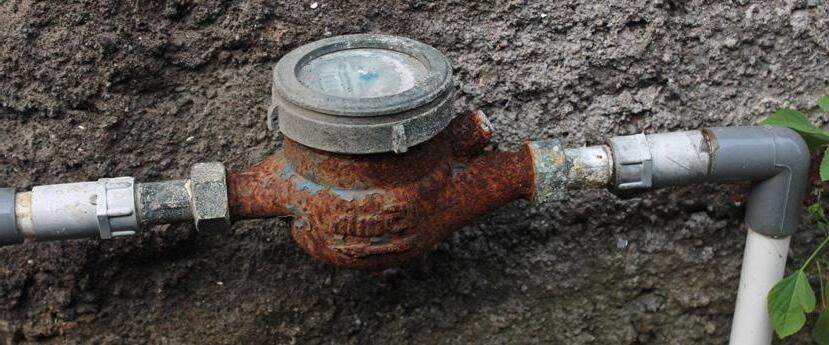
South Africa’s efforts to reduce non-revenue water rely on metering devices, which are regulated to give the desired result. Non-compliant meters threaten accuracy, system compatibility, and longevity.
The South African Local Government Association (SALGA) oversees municipal governments, and one of its key responsibilities is ensuring compliance. Noting that non-compliant meters were making their way onto tenders for municipalities, SALGA sounded the alarm to the National Regulator for Compulsory Specifications (NRCS).
To combat the use of non-compliant technology, several educational web seminars were conducted to engage municipal stakeholders on the issue.
The current legislation
Water meters fall under the NRCS legal metrology framework and must comply with SANS 1529 for the meter to be compliant.
Water meters are used domestically, within trade, as well as in health and
The lists of compliant devices are found on both the NRCS and the Jaswics database.
Localising solutions
SALGA and the NRCS note that the issues with non-compliant meters stem from the illegal importation of meters, which makes repair and integration nearly impossible. These meters slip into the South African network without oversight and pose a risk to the end user, either by not working or by overestimating the amounts.
To combat this issue, the South African Metering Industry Association (SAMIA) proposes that meters should be locally produced to comply with local standards. In 2017, their proposal for 40% of residential water meters to be locally produced was approved. This move was poised to create jobs, increase compliance, and build-up South Africa’s manufacturing. Above the economic benefit, SAMIA indicated that local content boosts accountability within the municipal space.
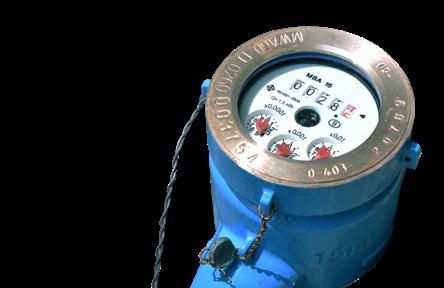
Steps forward
When SALGA pointed out the problem of illegal meters, NRCS
responded to the matter to best lay out a path forward.
Tenders that ask for incorrect and illegal devices must be dealt with by the ‘legal person responsible’. The municipality placing the tender remains responsible. Approval is usually given by the executive mayor, and it is their job to check for incorrect listings.
The NRCS notes that since this issue was raised and the multiple seminars, the issue is now sufficiently ‘communicated’ and there is no reason but not understanding that this is a regulated sector. They note that terms of the Legal Metrology Act section 17, read in conjunction with SANS 1529, the user (the municipality) of the water meter is responsible for ensuring that the meters are compliant. This can be done by checking for a Certificate of Compliance that is issued with correctly procured devices.
All water meters that are used for trade purposes must be subject to mandatory approval and verification by the NCRS. No municipality that is not designated may undertake repairs or verification of meters; they must obtain designation or use designated bodies to do it.
It is also noted that tenders have a designated item that speaks to fulfilling all relevant regulatory and legal compliance, such as national standards compliance, NRCS, municipal procurement rules, and local content requirements.
For the NRCS and SAIMA, metering is crucial to the functioning and economy of South Africa, and compliance is a nonnegotiable step in this sector.
Raquel Nosie Mazwi, director of mine and industrial water quality regulation, Department of Water and Sanitation (DWS), says, “Mpumalanga, Gauteng, Kwa-Zulu Natal, and Limpopo in particular are plagued by mine-impacted water pollution.”
Mpumalanga faces mine water problems due to abandoned mines and decaying controls meant to manage mine-impacted water.
are known to pollute water. Kwa-Zulu Natal has many abandoned coal mines that have filled up with water. Limpopo, especially the Lephalale area, hosts active coal mines and produces water with high sodium levels. Mines in Limpopo impact the Olifants catchment.

Gauteng’s geographical make-up contains elevated levels of pyrite associated with gold mining, which Mining is one of South Africa’s key drivers for economic growth and employment, yet the sector has also had a serious toll on the environment. Mining’s impact on water, particularly acid mine drainage, is one that the sector must contend with.
Mazwi says, “Mining is regulated by the Department of Mineral Resources (DMR), but the impact of mining concerns the Department of Forestry
and Fisheries (DFFE) as well as DWS. We at the DWS have a particular interest in mine water management, mines use massive quantities of water and threaten ground water and other supply sources when not managed properly.” Mazwi explains that as South Africa focuses on sustainability, the

issue of mine water becomes important in the context of ensuring environmental safety and circular economic practices. This necessitates a strong regulatory framework that encompasses the changing landscape of environmental law in South Africa.
Environmental regulatory framework Mazwi highlights several sections of the constitution that are important when discussing mine water.
Section 24: Environment. Everyone has the right to an environment that is not harmful to their health or well-being, and to have the environment protected, for the benefit of present and future generations, through reasonable legislative and other measures that:
- Prevent pollution and ecological degradation;
- Promote conservation, and
- Secure ecologically sustainable development and use of natural resources while
- Promoting justifiable economic and social development.
Section 40: This section clearly defines the roles of government on a national, provincial, and local level and indicates that they are independent yet interrelated.
Section 27: This deals with health and says that everyone has the right to health care, food, and, importantly, water. There are also several acts that govern South Africa’s water and are important in the context of mine-impacted water:
• National Environmental Management Act No 107 of 1998 (NEMA)
• National Environmental Management: Air Quality Act No.39 of 2004 (NEM: AQA)
• National Environmental Management: Biodiversity Act No 10 of 2004 (NEM:BA)
• National Environmental Management: Protection Areas Act No 57 of 2003 (NEM:PA)
• National Environmental Management: Waste Act No 59 of 2008 (NEM: WA)
Mazwi explains, “This regulatory framework guides the water management principles of South Africa. The national government is the custodian of water resources. The development, management and use of water is carried out in the interest of the public, which means there should be equity and quality among water users. All people have the right to potable water and sanitation.” Mines must register for a water use license and therefore comply with all regulatory and legal requirements. It is also the responsibility of the mines to conform to local by-laws and selfregulation and must collect evidence to support their compliance.
How DWS enables the circular economy of mine-impacted water
The water pollution from mining contains heavy metals, chemicals, and acid and is not suitable for human consumption and agriculture. However, this does not need to be the case as Mazwi says, “If we manage this wastewater in a sustainable
document sets the scope and policy of dealing with mine water, Mazwi adds, “this is guided by existing frameworks and works in conjunction with other legislation like the National Water Act and the constitution.”
This document specifically tackles mine closure, liabilities, and the use of technology for treating mine water, including acid mine drainage. This document also works in tandem with the regulation GN 704 of the National Water Act, which:
• Addresses impacts from mines and associated activities on the water resources
• Ensures that systems are in place at all mines to enable effective management of the impacts of mining on the water resources
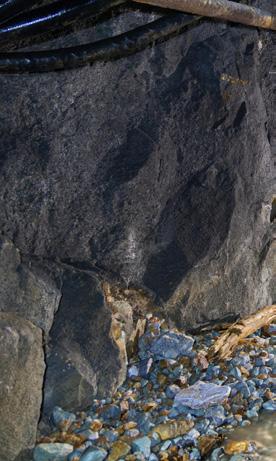
• Ensures consistent and sustainable implementation of the water management hierarchy at all mining facilities that have the potential to impact the water resources over the full life cycle of the mine
• To give effect to the BPG and Mine Water Policy
• Encourage Re-use and desalination of mine-impacted water
• Enable piloting of research projects and technologies
Projects in place
Coaltech, a non-profit organisation that


water in agriculture and green hydrogen production.
In the Witwatersrand area, the eastern, western, and central basins are all being tested to treat and reuse mine water.
Western basin
The Trans-Caledon Tunnel Authority (TCTA) refurbished an existing plant operated by Sibanye Stillwater. The treatment increases the pH and reduces heavy metals such as iron. The plant currently treats 35 Ml /d, which is released into Tweelopiesspruit. The current obstacles are high rainfall, illegal miners removing plugs, and not enough capacity. This plant has not been able to lower the water level in the mine void to an environmentally acceptable level.
Central basin
The plant in the central basin treats water using hydraulic dewatered stacking (HDS). This process involves dewatering the mine water and then stacking it
meant that this plant has operated much lower than its longterm capacity.
There is groundwater contamination at all sites, and the water quality must continually be monitored. The DMRE has a project using ingress control to reduce water migration into the mine voids to minimise acid mine drainage.
New tech on the block
The private sector may hold some solutions for the government in terms of treating mine water and making a sizable positive impact on the environment. José Gomes, head of corporate development at Dornier Group, says, “Water scarcity means we need to make use of all the water we have at our disposal, and mine water represents an opportunity to use the water that would otherwise remain
can also be used to crystallise minerals,” says Gomes. In their desalination process, the freezing begins at -2 degrees Celsius, which crystallises fresh water from salt water and once frozen, floats and can be removed. Mazwi adds, “Ideas from the private sector can be useful for government, and the growing use of public-private partnerships will certainly pave the way forward for us. Mazwi continues, “South African environmental legislation can help solve South Africa’s water quality challenges. There is a need to explore technologies and use the data from existing projects to better the efforts in fighting against mine water contamination.”
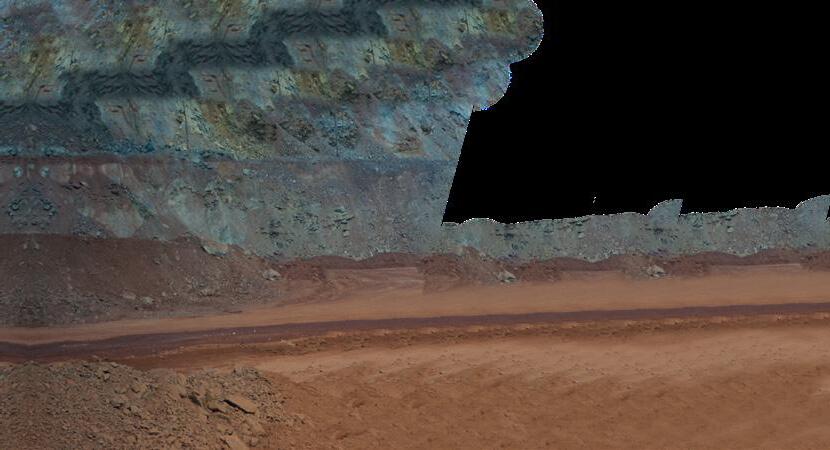

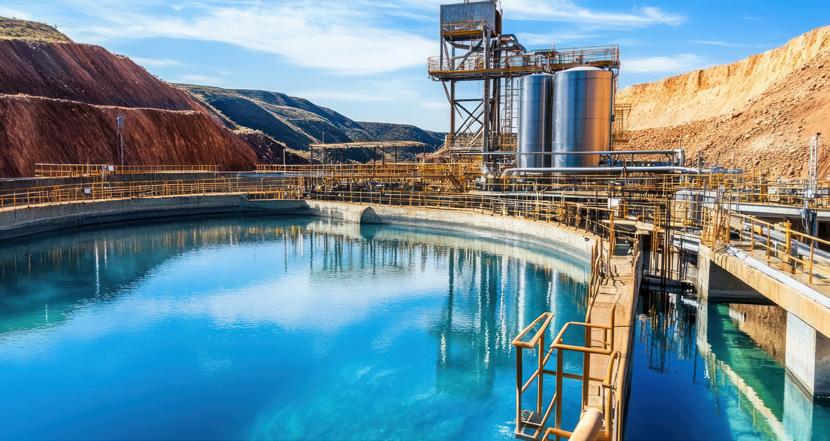
Due diligence studies are comprehensive investigations into a mining project conducted before a project takes place. This is used to check if a project can deliver its stated outcomes. SRK Consulting, a mining consultation company, notes that water-related risks can easily be underestimated.
The underestimation of water-related risks, such as pollution and flooding, needs to be considered for investors and lenders to make informed decisions.
“In most mining transactions, the issue of water generally presents a significant risk to investors,” says Peter Shepherd, partner, and principal hydrologist at SRK Consulting South Africa. “This extends well beyond ensuring that the operation has a sufficient supply of water to meet its production targets; other key factors include the mine’s ability to
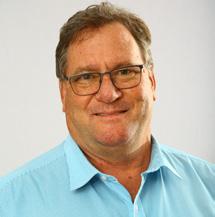
minimise pollution and discharge water, if necessary, with a water quality in line with both legislation and global standards.”
Shepard notes that a mine’s water supply – abstracted from surface or groundwater resources – needs to be assessed in terms of its sustainability over time and production requirements. Further, the operation needs to understand how its water consumption is likely to affect other users within the catchment.
“This plays into the environmental, social and governance (ESG) obligations of the mine, as the security of water supply needs to consider the bio-physical and social impacts of the operation’s water usage,” he says. “A due diligence study, which includes examining the
mining company’s strategy for managing its water balance, needs to confirm that its systems and plans are adequate – and that there has been effective engagement with other stakeholders where necessary.”
Legal compliance is another key factor in passing due diligence, according to Ismail Mahomed, principal hydrogeologist at SRK Consulting SA, as the use of water resources globally is regulated by national laws and regulations.
“Incidents of non-compliance can carry various risks – such as the risk of financially onerous penalties, reputational risk for the company’s brand, and the risk of regulators stepping in to stop operations,” says Mahomed.
The way that mines use water in their processing plants, as well as how they control run-off on the mining site, raises the issue of water quality, he continued. Water can only be discharged from the
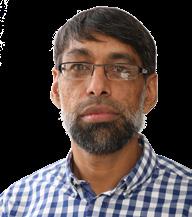
site if it meets certain quality parameters, and the systems must be in place to achieve this.
“For instance, large volumes of water are required to transport tailings in a slurry, to be deposited on storage facilities after mineral extraction,” he explains. “Tailings have significant potential for contamination, especially with regard to groundwater.”
He noted that if a mine is to change hands, the new owner would want to have a high level of certainty that there were minimal signs of groundwater contamination, as this would be a difficult and costly exercise to remedy and may take many years of continuous investment. Indeed, the legal responsibility for such pollution could remain with the owner even after the mine had ceased production, but these types of negotiations would need to be undertaken once severe contamination is identified or the risk is observed.
Shepherd pointed out that, even if the mine is not currently contributing to water contamination, there is a residual risk arising from historical pollution.
Mahomed says, “There may have been an unchecked discharge of dirty water over many years, which has polluted soil and groundwater downstream of where discharge occurs. Contaminated sediments in a water storage dam may be degrading the environment and posing a
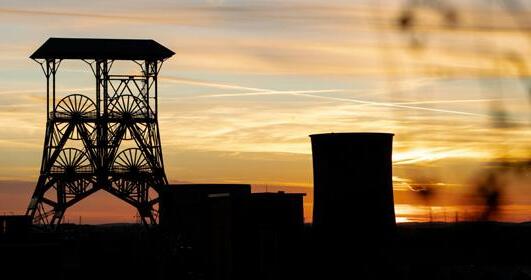
risk to water quality, so these need to be identified during due diligence.”
These material findings could impact the assets’ value and could lead to contractual changes to adjust how liabilities and costs are apportioned. He also pointed to the safety risk of tailings dams, which are also related directly to the mine’s water management strategies.
“In the due diligence process, we look at the water-related aspects of tailings dam safety,” explains Mahomed. “The top of the dam, for example, needs to be large enough to contain rainfall events without over-topping for an extremely low probability (less than 1:100 years, in some cases). Where this is in question, the level of risk would need to be identified, and the new investors would need comfort that mitigation measures could be implemented, as well as the capital commitment required.”
Another important aspect to consider is dewatering, as ingress from groundwater
and surface run-off into the mine workings poses a risk to operational continuity. A due diligence study must assist investors in assessing whether a mine can cope with the level of dewatering required.
“Water pumping capability would need to be investigated in terms of the availability of correctly specified pumping equipment, pipeline infrastructure and redundant units,” he says. “Other factors to consider would include standby power for the pumps, and the potential variability of weather patterns in the context of climate change.”
What arises from the due diligence process is essentially a gap analysis that highlights opportunities, not just for addressing risk, but for improving the operability of the mine.
“This is one of the valuable upsides of conducting a due diligence study, as it could allow a company to improve the safety, environmental impact and even the profitability of the operation,” adds Mahomed. “As an example, water professionals work closely with geotechnical engineers on studies into slope stability in open pits, highlighting the value of hydrological and hydrogeological insights.”
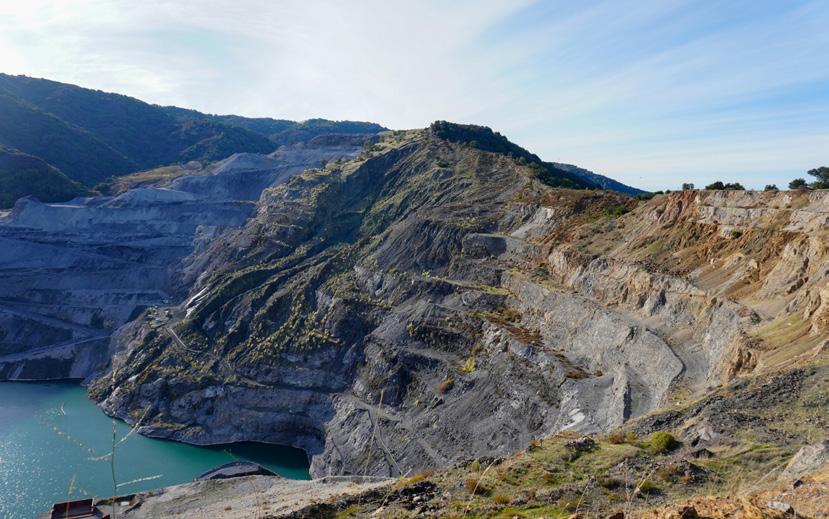
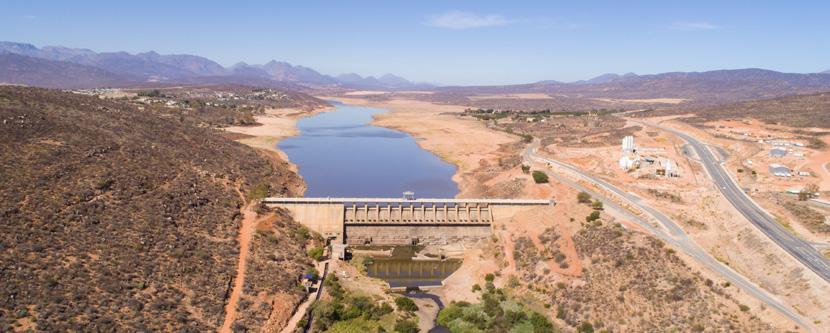
The Government of the Republic of South Africa has identified infrastructure development as a catalyst for economic growth and development. This was highlighted by President Cyril Ramaphosa when he delivered his keynote address at the recent Sustainable Infrastructure Development Symposium South Africa (SIDSSA) in Cape Town. By Malusi Rayi, communications, Department Water and Sanitation (DWS), Western Cape
The launch of the Bulk Water Supply Scheme by Water and Sanitation Minister Pemmy Majodina in Tulbagh under Witzenberg Municipality reinforces the President’s assertion that infrastructure development is key for both social and economic growth.
The R48 million phase 12 of the Tulbagh Bulk Water Supply was funded by the Department of Water and Sanitation (DWS) through its Regional Bulk Infrastructure Grant (RBIG). The Department committed R43 million while the municipality contributed a further R5 million.

This investment will help the close to 10 000 people in Tulbagh and its surroundings by boosting the agrieconomy and increasing the delivery of low-cost houses.
In light of the widespread problem of infrastructure vandalism that disrupts service delivery, the government is calling on communities to safeguard infrastructure. Residents are urged to report vandalism to their local authorities.
Infrastructure development stimulates economic growth and attracts investments. It is essential in supporting sustainability and creating a solid foundation for long-term prosperity. Through its Regional Bulk Infrastructure grants and other forms of assistance, DWS is committed to
Malusi Rayi, communications, Department Water and Sanitation (DWS), Western Cape
supporting Water Service Authorities in developing and maintaining infrastructure.
Meanwhile, Minister Majodina has expressed her satisfaction with the engineering work done at the raising of Clanwilliam Dam, in Cederberg Municipality. This project is also one of the Department's catalytic projects, which will significantly increase the water supply within the Municipality. The R5.7 billion project is a significant investment in the West Coast Region and is envisaged to be completed in 2028. It involves raising the dam by 13 metres, and this will almost triple its water yield and bring economic spinoffs for the region. The main beneficiaries will be local farmers, households and emerging farmers. During the construction phase, the project is expected to generate substantial economic opportunities for regional entrepreneurs.
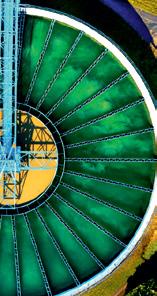
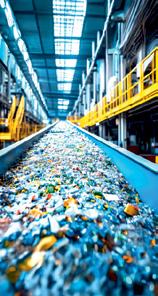








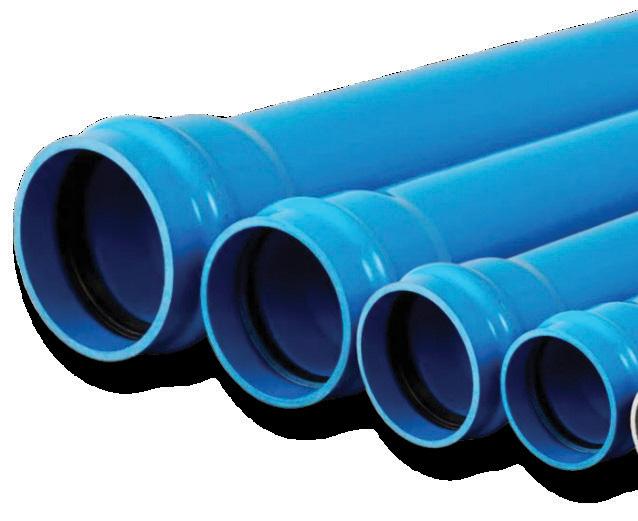
TOM® PVC-O pipes are a product developed exclusively with the Molecor innovative technology that provides the highest Molecular Orientation. The manufacturing process is continuous and completely automatic, which ensures the maximum product reliability and a quality control tube to tube for the 100% of the production.
Best Solution
TOM® is the best solution for the conveyance of water at medium and high pressure for irrigation systems, drinking water supply, reuse, industrial or fire protection lines, among other uses. The extraordinary technical advances of the manufacturing system of Molecor confer the TOM® Oriented PVC pipe significant improvements.

Main advantages
• Cost efficiency: Manual handling up to DN350 mm
• Natural resources Usage optimization: Optimization of the use of natural resources and 100% recyclable
• Energy efficiency: Lower energy consumption throughout the life cycle
Polyvinyl chloride (PVC) is essentially an amorphous polymer in which molecules are aligned at random. However, by stretching the material and under certain conditions of pressure, temperature and speed, the polymer molecules can be aligned in the same direction as it has been stretched.